Across the U.S., the cost of living varies dramatically by state due to factors like housing, taxes, and groceries.
Economic opportunities and natural beauty are desirable, sure, but they come with a hefty price tag. For those seeking a place to live that’s both affordable and offers a high quality of life, finding the right balance can be challenging.
Let’s take a look at what drives living expenses and how they impact residents’ lifestyles.
Hawaii

Living in paradise comes at a cost, particularly in Hawaii, where everything from groceries to gas is more expensive due to import requirements. The average cost for a single-family home hovers around $1 million, reflecting its desirability and limited land. Hawaii’s unique cultural and natural beauty make it a sought-after living location.
New York

New York City drives the state’s high cost of living with its luxury real estate and high-end lifestyle options. Manhattan’s average rent for an apartment can soar above $4,000, a testament to the city’s relentless demand. Outside the urban center, prices drop, but New York remains one of the most expensive states overall.
Massachusetts

The presence of prestigious institutions like Harvard and MIT contributes to Massachusetts’ high cost of living. Rental prices in Boston alone can average over $3,000 for a modest apartment. The state’s robust education and healthcare sectors fuel a competitive housing market.
Alaska

Living in Alaska can be costly due to its remoteness and logistic challenges in supplying goods. Heating costs during the frigid winters can significantly drive up living expenses. Additionally, despite a smaller population, the prices of everyday items are often higher than in the lower 48.
Oregon

Oregon has become increasingly popular for its environmental initiatives and quality of life, pushing up living costs. Portland’s housing market has seen prices jump, with many homes selling for over half a million dollars.
Maryland
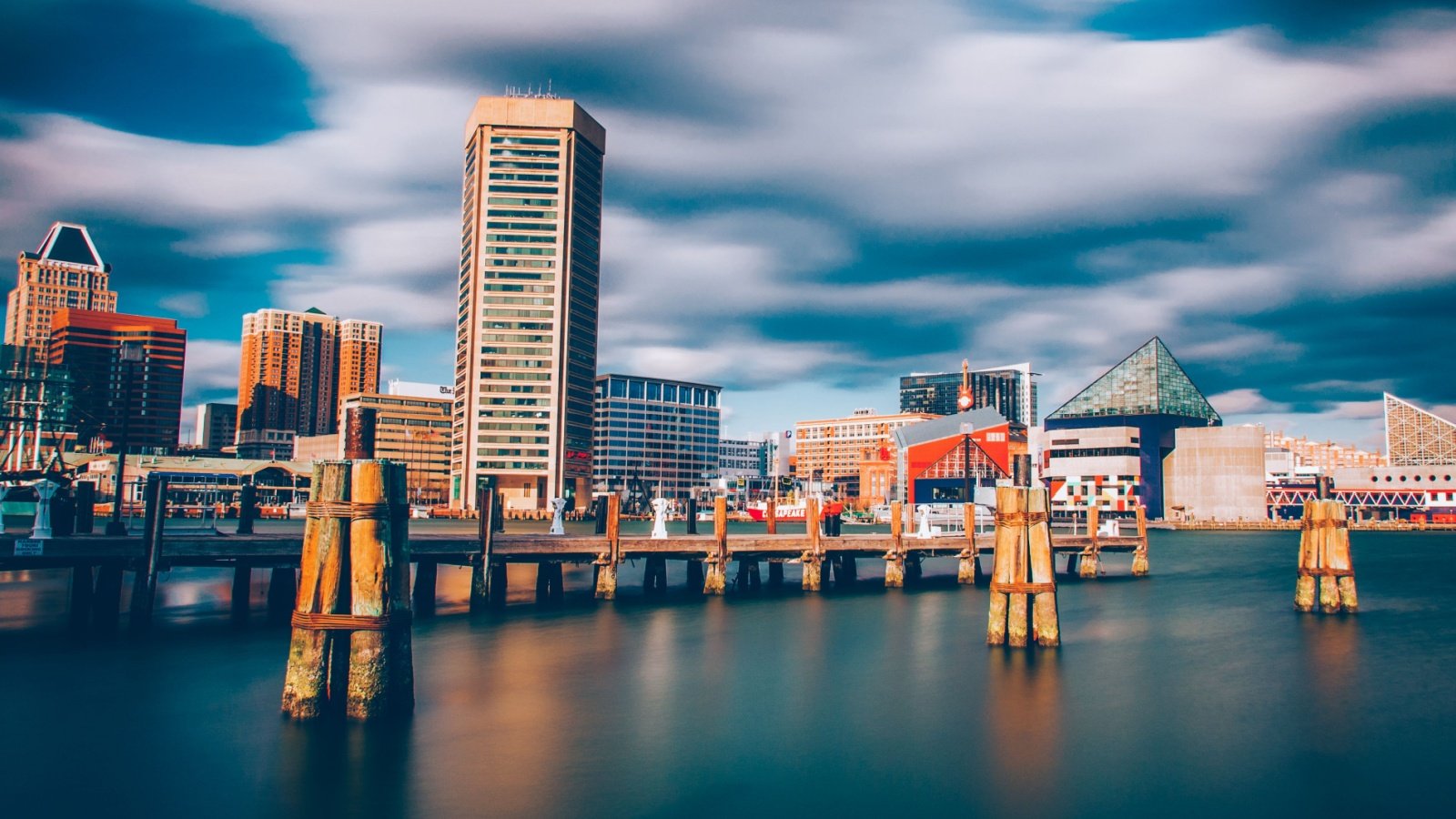
Maryland exhibits a high cost of living, particularly in areas close to Washington D.C. The median home cost in the state is well over $350,000. Its proximity to numerous federal agencies and high median incomes contribute to its costly living conditions.
Connecticut
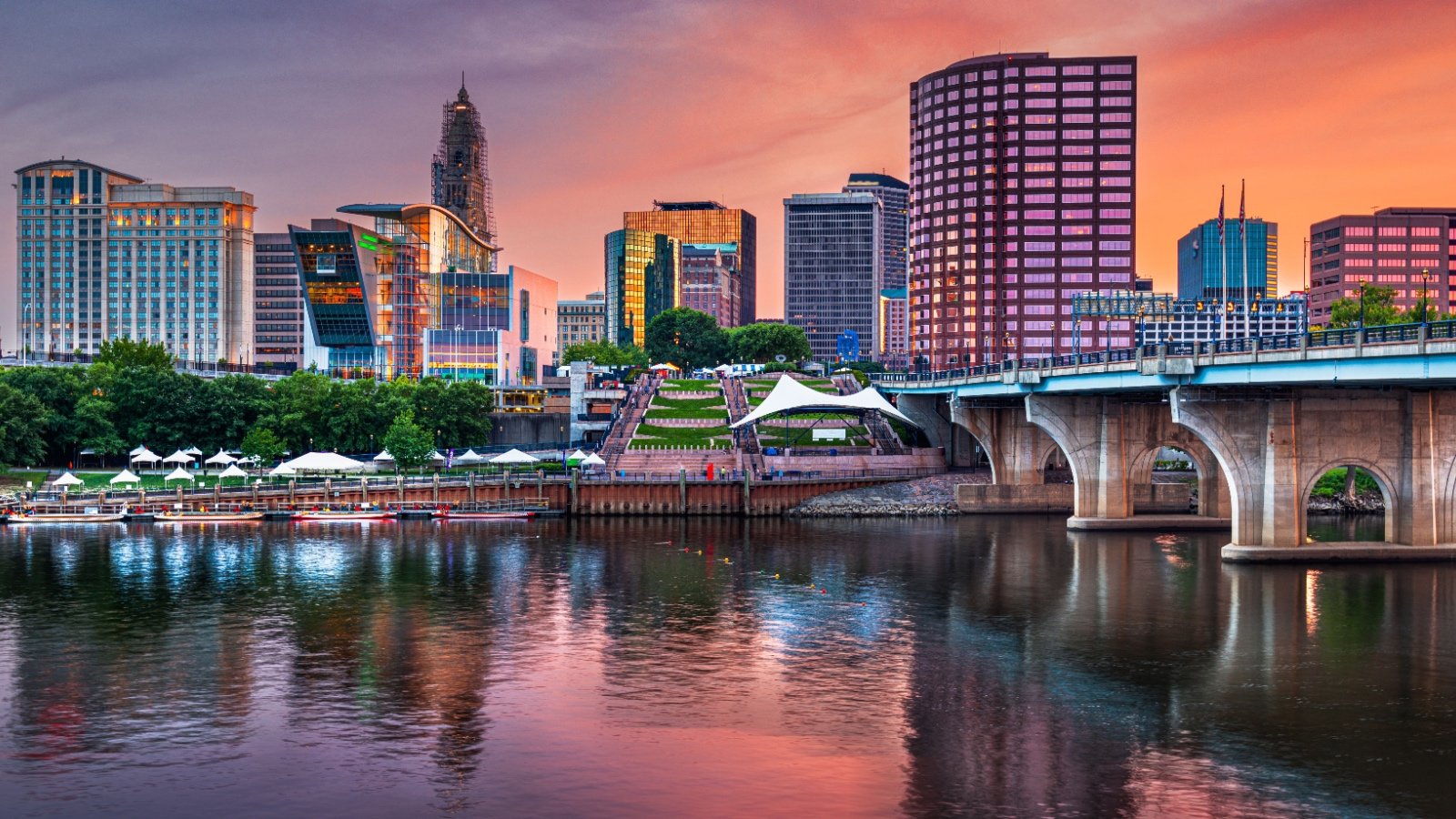
Connecticut enjoys a high standard of living with corresponding costs, particularly in affluent areas like Greenwich. The state is known for its high property taxes and expensive private schools, catering to a wealthy demographic.
New Jersey
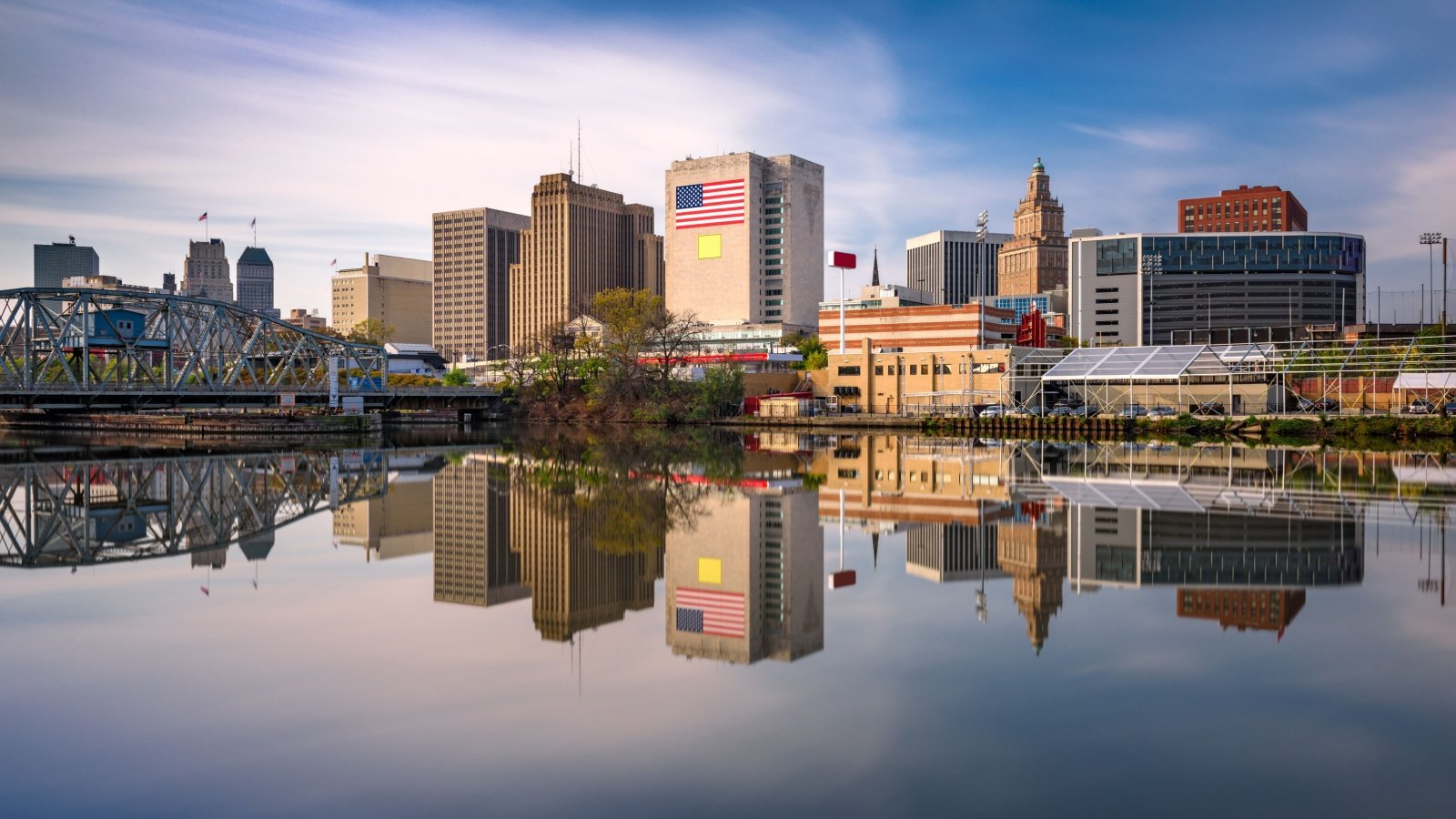
Proximity to major metropolitan areas like New York City and Philadelphia makes New Jersey a costly state to live in. The median home price is above $400,000, driven by high demand in the commuter belt. High transportation costs also add to the daily expenses of New Jersey residents.
Rhode Island
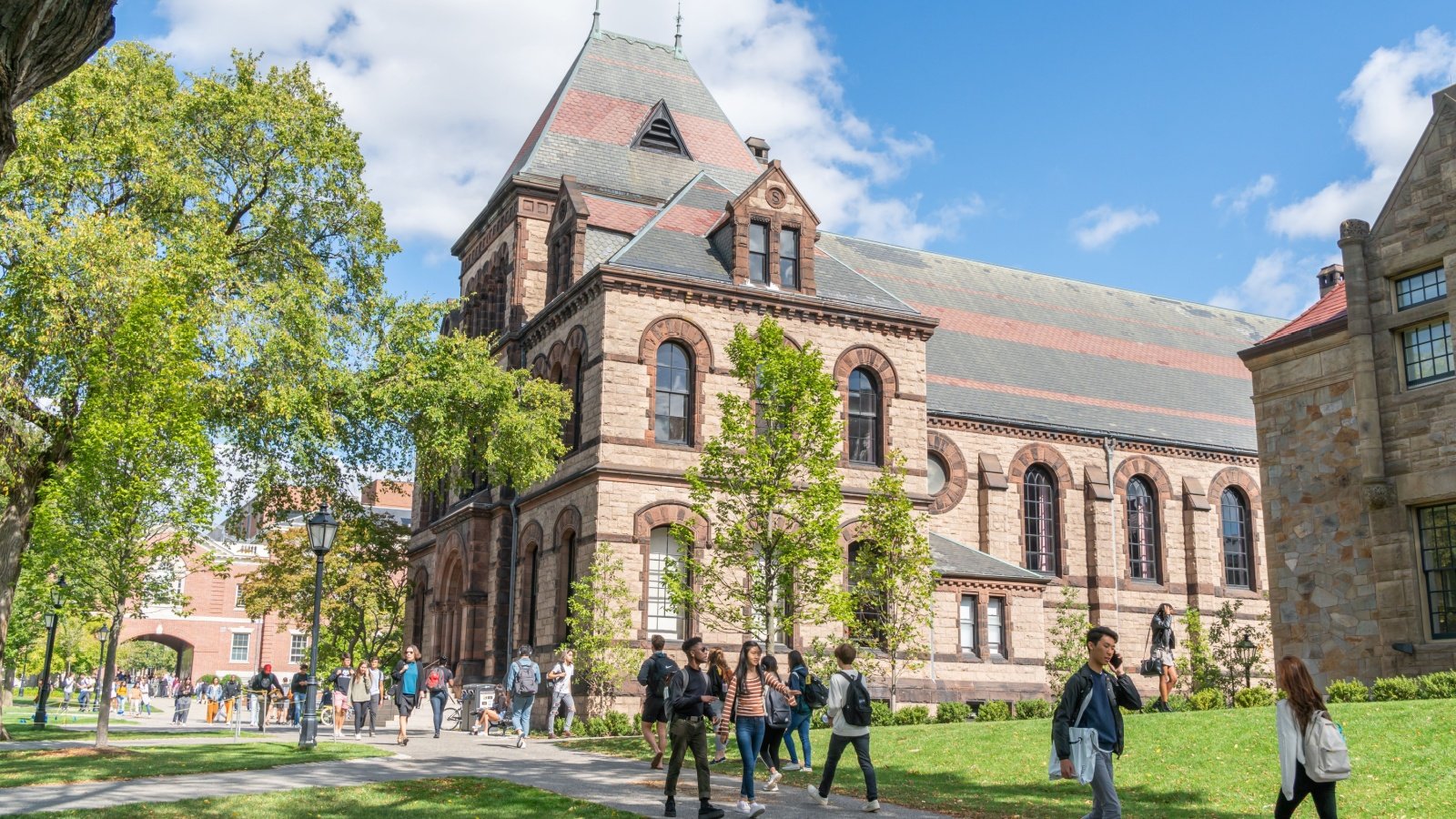
Rhode Island might be the smallest state, but its living costs are large, especially along its scenic coasts. Property values in coastal areas such as Newport can rival those of larger cities. Despite its size, the state’s cultural scene and excellent seafood attracts tourists and residents alike.
Colorado
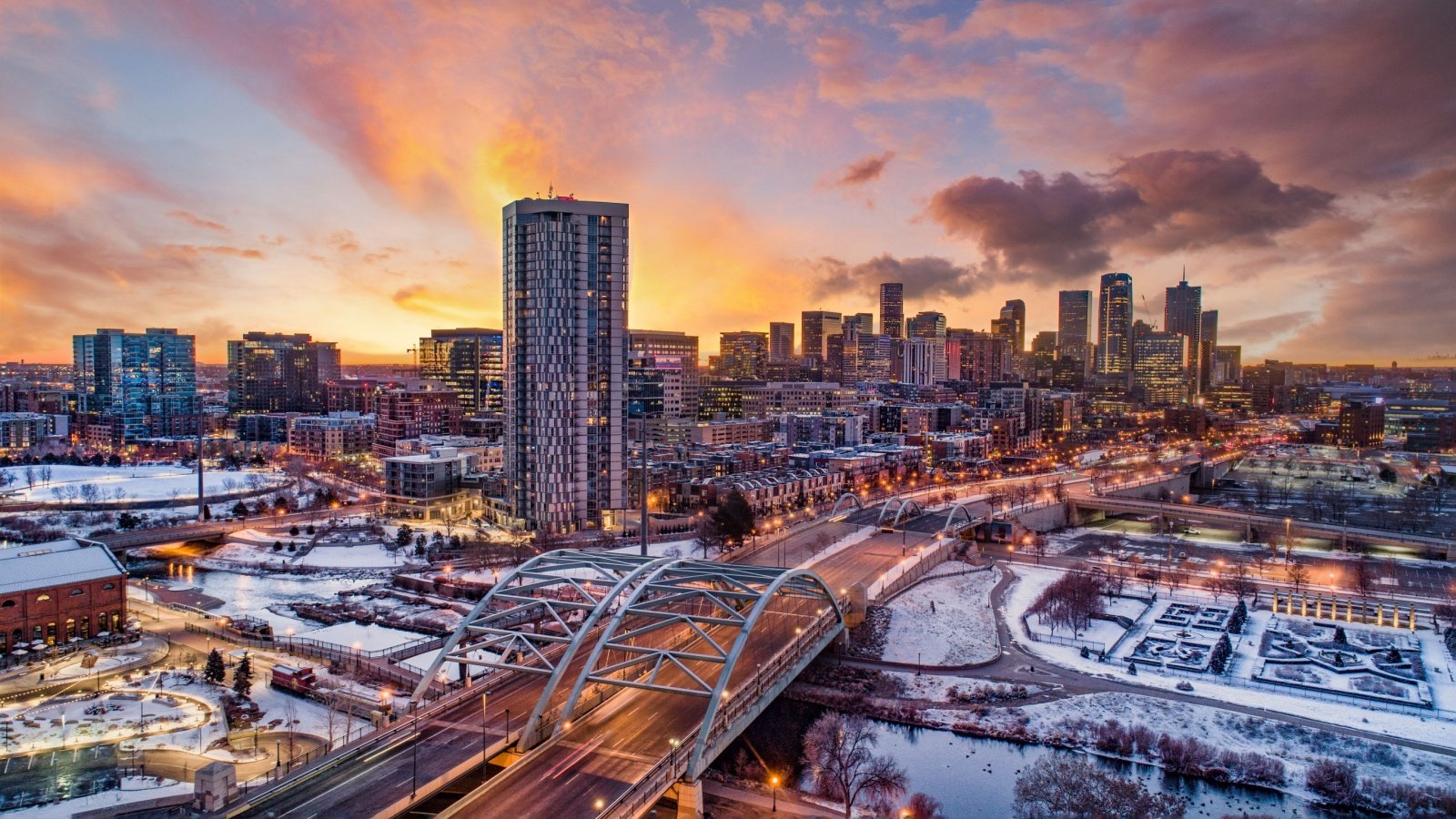
Colorado’s popularity as a destination for outdoor activities and a booming job market in cities like Denver has driven up living costs. The average home price in Denver has surpassed $600,000. Despite the high cost, Colorado’s quality of life continues to draw people from across the country.
Washington

The tech boom centered around Seattle has significantly increased the cost of living in Washington State. Real estate in Seattle can be incredibly pricey, with average home costs exceeding $800,000. The influx of tech companies and workers continues to push prices upward.
Virginia

Northern Virginia, part of the bustling DC metro area, features some of the highest living costs in the state. Housing prices here contrast sharply with more rural areas where costs are lower but still significant. The state’s overall economic health keeps living expenses on the higher side.
Vermont
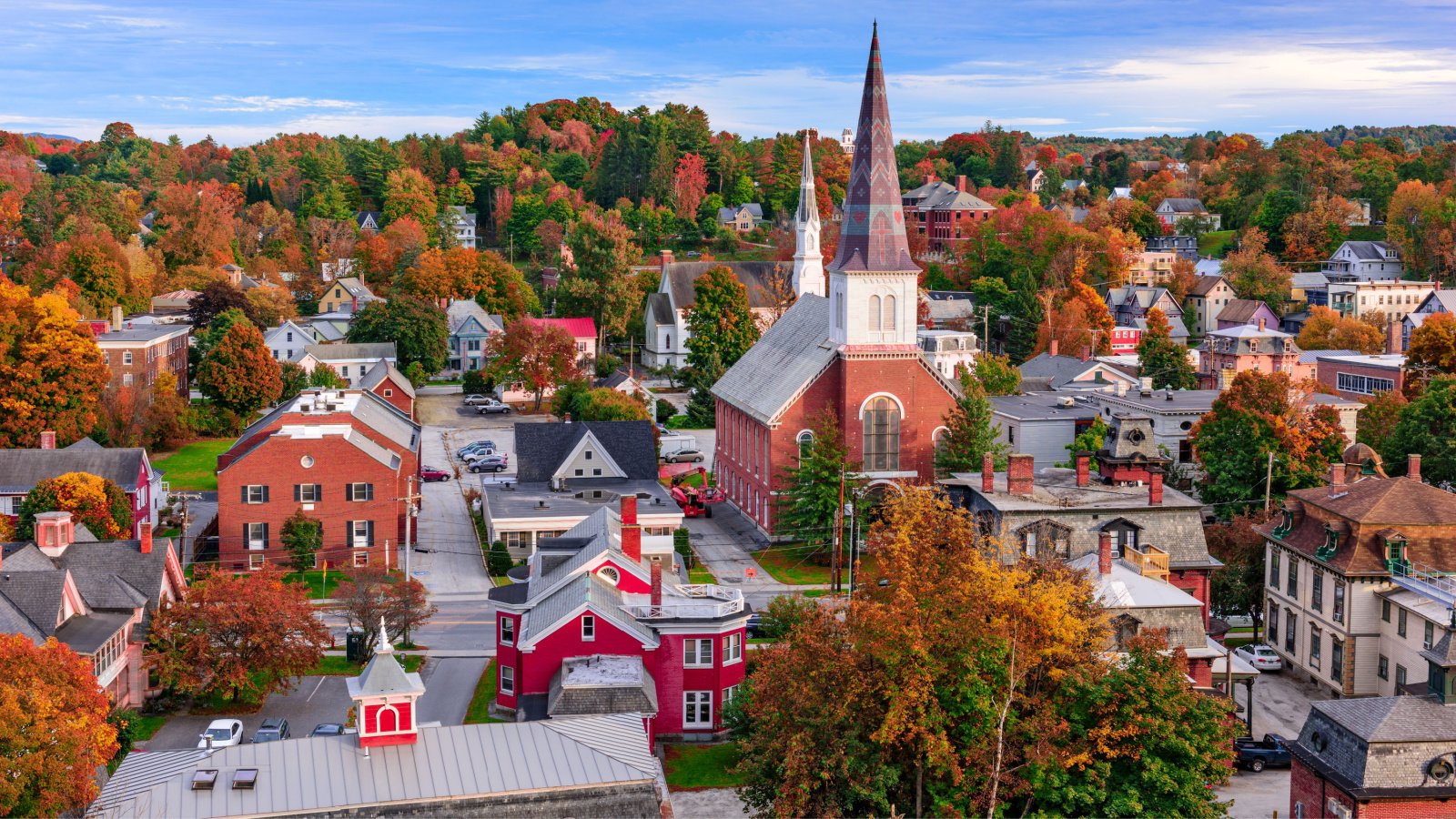
Vermont’s appeal lies in its picturesque landscapes and quaint towns, which come with a high cost of living. The focus on local and organic products drives food prices up. Despite its rural charm, Vermont’s housing market remains competitive, particularly in Burlington.
Maine
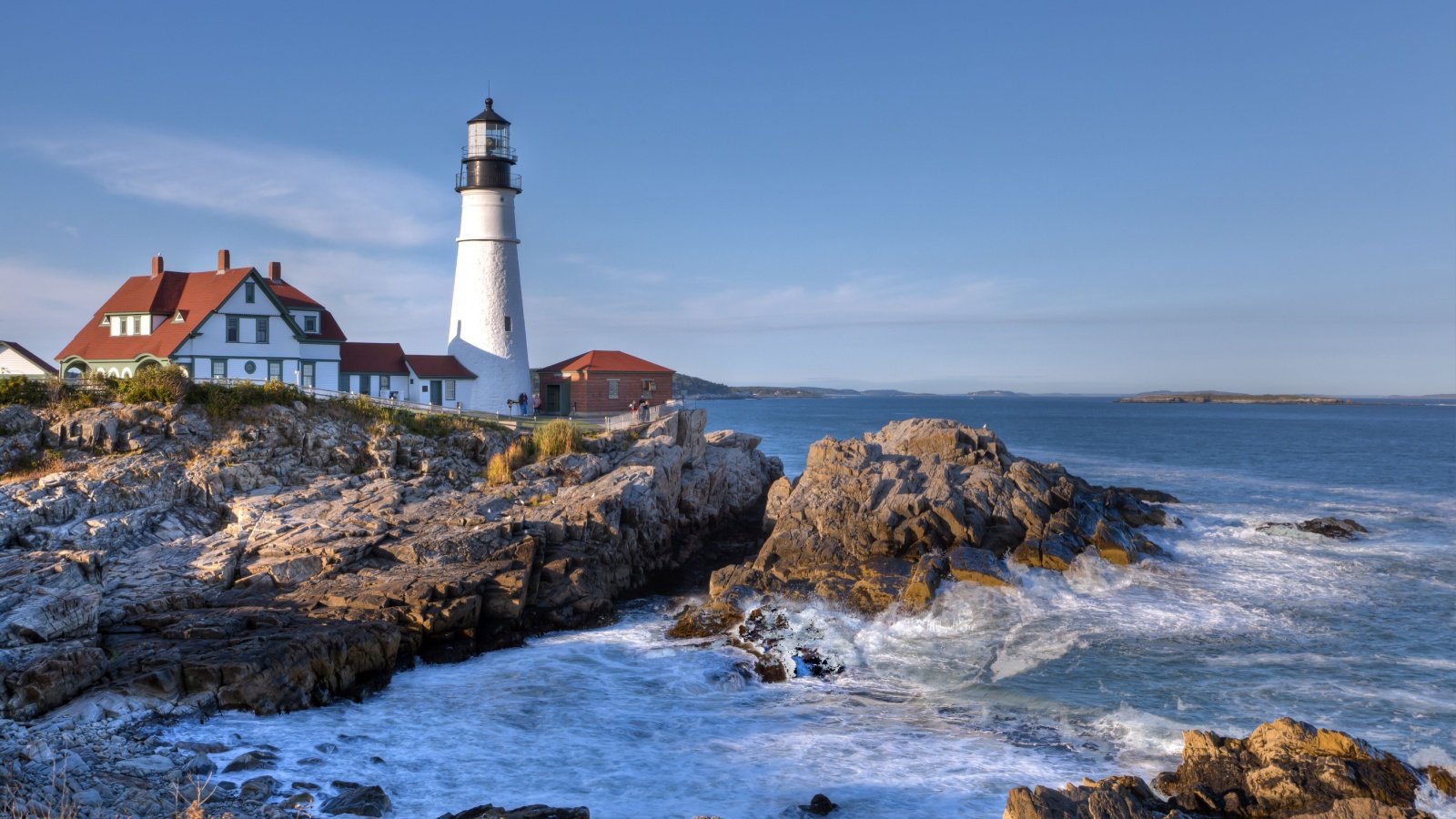
Living in Maine offers a unique blend of rustic life and the higher costs associated with its scenic coastlines. Housing in areas like Portland can be expensive due to their popularity and limited availability. Maine’s allure is undiminished by its costs, thanks to its active outdoor culture.
Florida

While Florida is known for its retiree-friendly tax rates, areas like Miami and the Keys have high living costs. The price of waterfront properties and hurricane insurance significantly affects overall expenses. Despite this, Florida remains a top destination for its beaches.
Nevada

Las Vegas and Reno have seen their cost of living rise due to entertainment and housing demands. While Nevada has no state income tax, the cost of utilities and services can be high. The state attracts a diverse population looking for job opportunities and entertainment.
Delaware
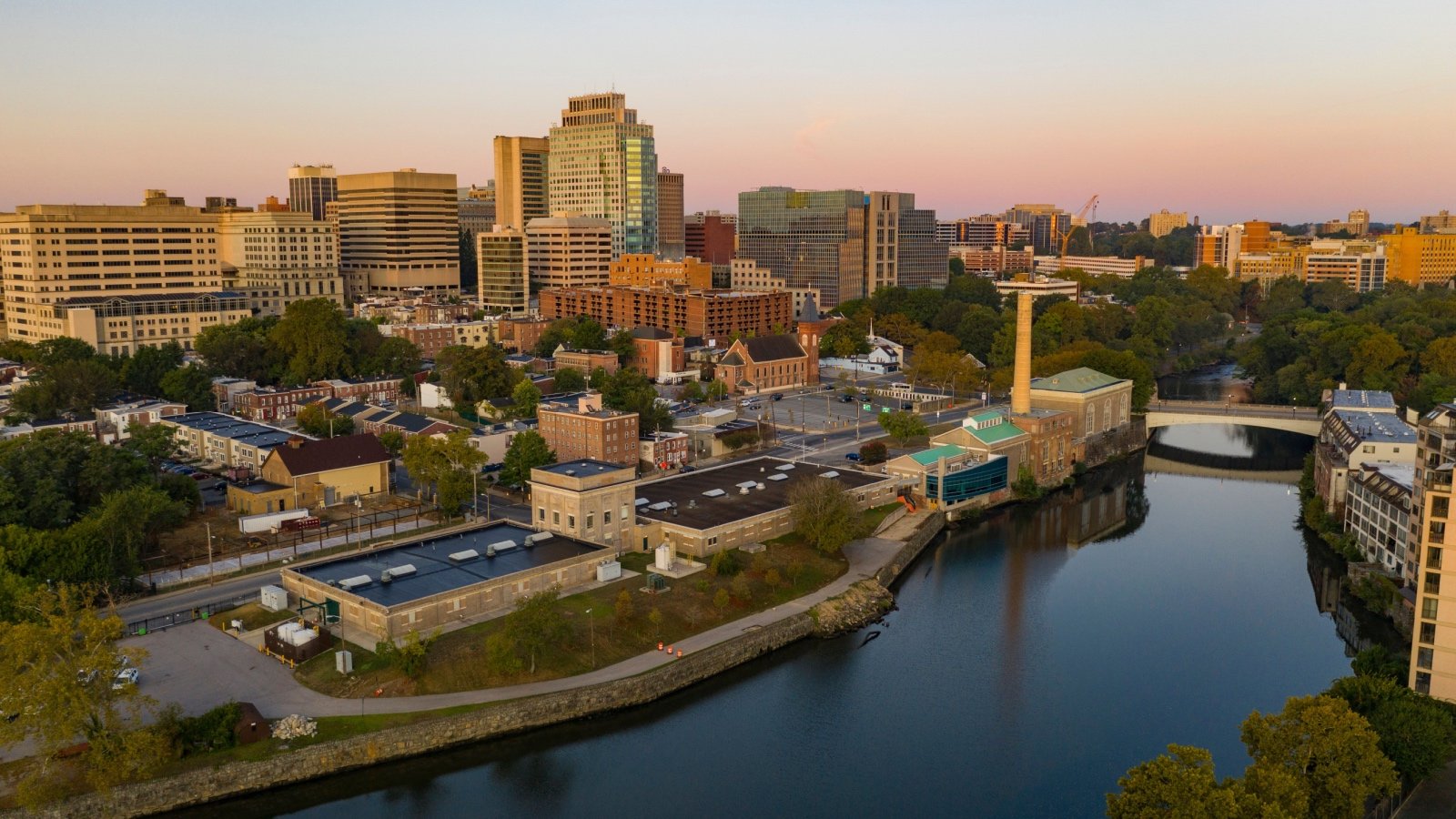
Delaware’s lack of sales tax makes it a shopping destination, which paradoxically contributes to higher living expenses elsewhere. Housing and healthcare are notably costly. However, Delaware’s central location and business-friendly laws continue to attract residents.
South Carolina
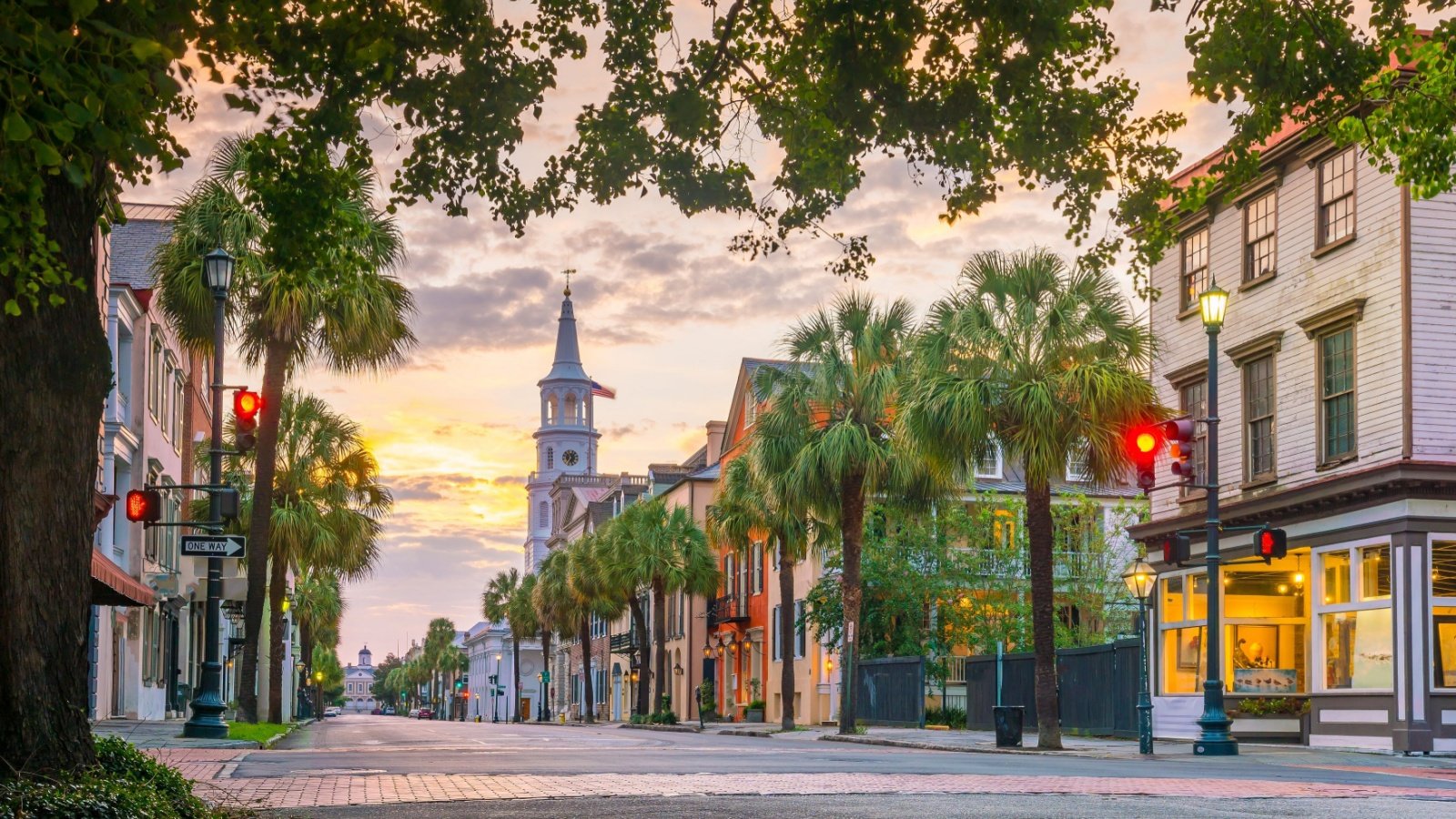
The growth of cities like Charleston has brought a spike in living costs, with housing markets struggling to keep up with demand. Despite lower taxes, the cost of living has climbed, particularly in coastal areas. South Carolina’s charm and economic opportunities draw residents like moths to a flame.
North Carolina
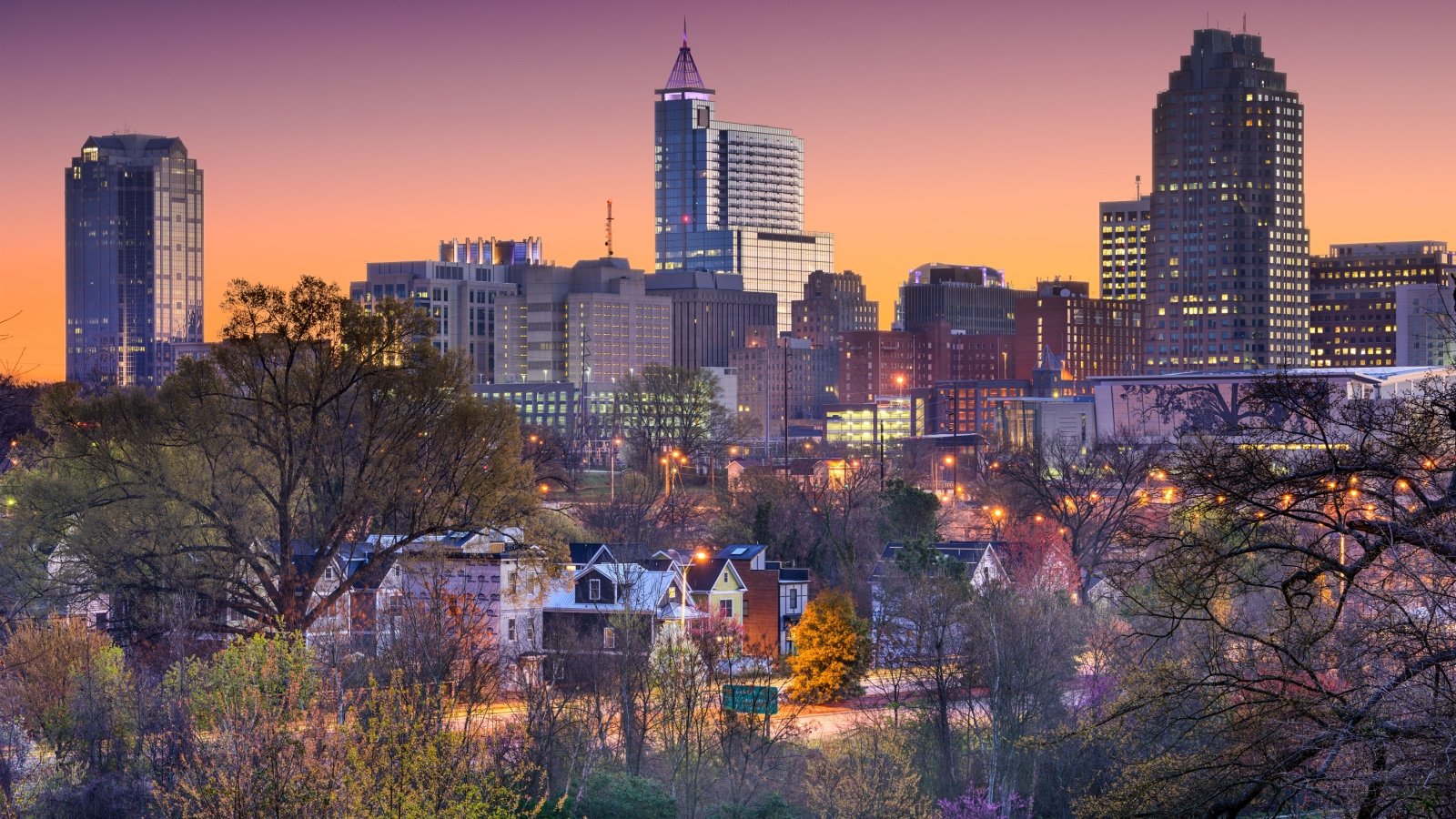
As cities like Charlotte and Raleigh expand, so does the cost of living. These urban centers are hubs for banking and technology, driving up local housing prices. North Carolina remains a popular move-to state for its balanced lifestyle, job prospects, outdoor recreation opportunities, and pleasant weather.
Pennsylvania
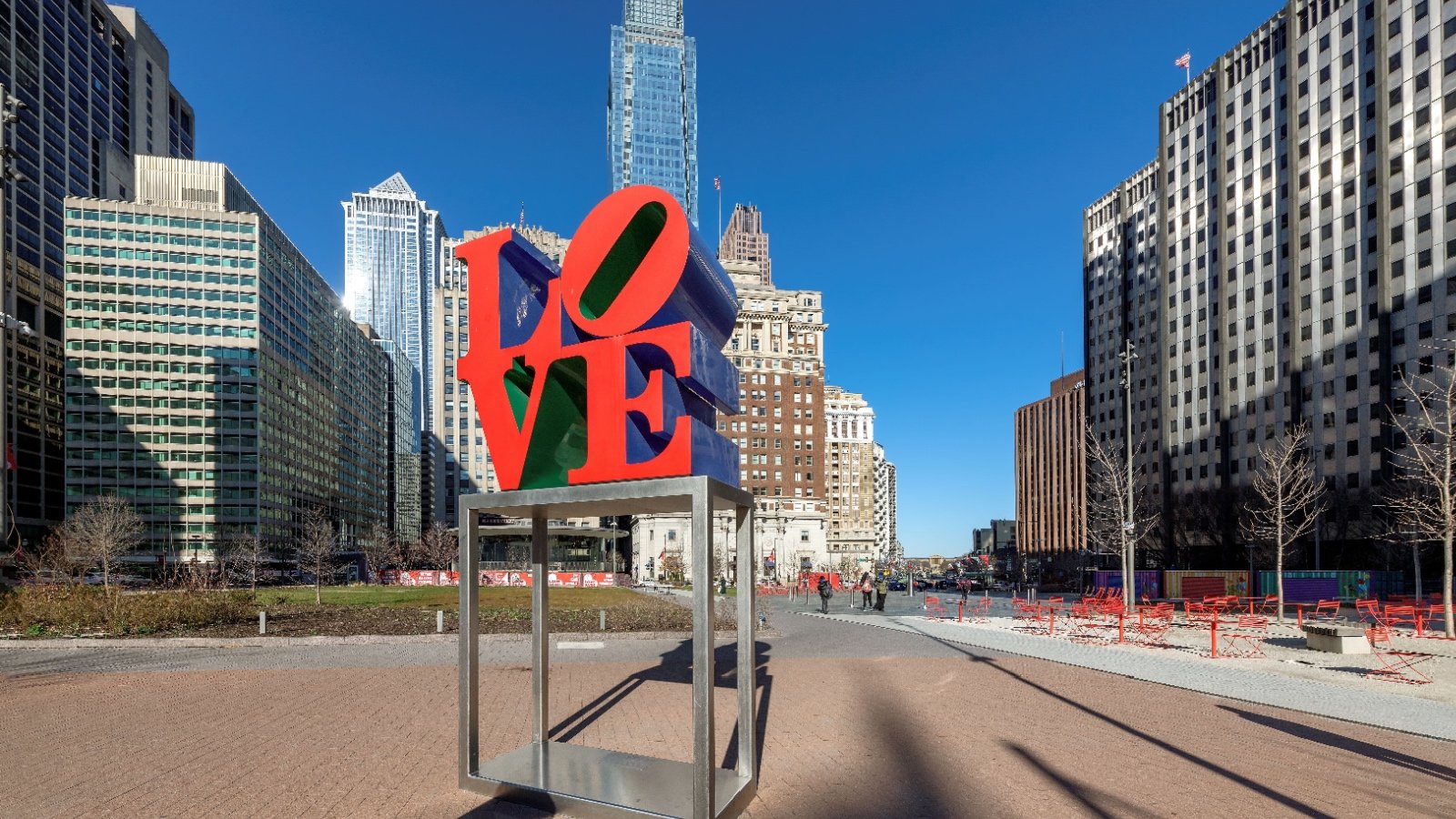
Living near historical hubs like Philadelphia can be expensive due to the tourism and the vibrant city life. The state blends urban expenses with rural beauty, creating a varied cost landscape. Pennsylvania’s storied history and cultural assets make it a perennially desirable place to live.
Illinois

Chicago’s status as a major urban center makes Illinois one of the more expensive states in the Midwest. Housing in the city can be pricey, especially in sought-after neighborhoods like The Loop. Illinois’ economic opportunities offset the higher cost of living.
Minnesota

The Twin Cities area drives Minnesota’s high living costs with a thriving arts scene and robust job market. Housing prices here are high compared to the national average. Minnesota’s quality of life, including excellent educational institutions and healthcare, justifies its higher living costs.









Play this gambling game on this Chicken Road page. Access the title whenever you want, and reload the game if you run out of credits. Mission Uncrossable shares some similarities to the Crash games but places a busy road as the setting, rather than space, and a chicken, rather than a rocket ship. You simply need to move the chicken across each lane of the highway with just a click or tap. The multiplier increases with every successful step. The gameplay is simple and easy, and players have a level of control. You can cash out winnings at any time, but if you get hit, you lose your bet and any accumulated winnings. Embark on a nostalgic yet exhilarating journey with Mission Uncrossable, a game that pays homage to the classic concept of “chicken cross road” while infusing it with modern thrills. Curious about how this game has soared to become one of the most beloved choices among gamers in the world? Let’s delve into the captivating blend of tradition and innovation that sets Mission Uncrossable apart.
https://rdnoticias247.net/2025/07/12/aviator-game-review-why-ghanaian-players-choose-spribes-aviator/
As an exclusive Roobet Original, Mission Uncrossable Chicken Game takes players on a high-stakes adventure where strategy and risk can lead to massive rewards. Every step forward can be a test of nerve, play it safe and cash out, or push your luck for even bigger payouts. Mission Uncrossable offers a unique experience with its combination of high volatility and substantial jackpots. By understanding the game’s mechanics, employing effective strategies, avoiding common pitfalls, and maintaining a positive mindset, players can enhance their chances of success. Remember that responsible gambling is essential, so always set limits on your spending and enjoy the game within your means. Mission Uncrossable is a high-stakes, high-reward game on GrabPenny that offers users a chance to win big by betting GPX. You can walk away with significant rewards by strategically placing bets and navigating the mission carefully.
Dulce could smell his cologne, and the scent of sex still on him. She felt a confusing rush of both nostalgia and fear. When things had been good between them, he was intoxicating. He was sexy, had money, and liked to lavish it on her, at least at first. But lately he’d stopped calling every day. He mostly came over for sex and didn’t take her out as much. He got texts while they were together, from some new girl whose name she didn’t recognize. And he always took time to text the girl back. Dulce didn’t want to hang on til he got tired of her. But she had nothing of her own. He’d paid all her bills but never gave her any cash. She’d felt the knot of money and seen her chance to get out with something. Ta autentyczna koszulka Chelsea 2020 21 to marzenie kolekcjonera! Ta koszulka, podpisana ręcznie przez Reece’a Jamesa w Londynie, 19 kwietnia 2024 r., jedną z wschodzących gwiazd Chelsea, jest świadectwem jego talentu i zaangażowania w klub. Na koszulce znajdują się detale meczu upamiętniające zwycięstwo w Lidze Mistrzów przeciwko Manchesterowi City.
https://www.pr5-articles.com/Articles-of-2024/bizzo-casino-no-deposit-bonus-codes
7.1. Pliki Cookies (ciasteczka) są to niewielkie informacje tekstowe w postaci plików tekstowych, wysyłane przez serwer i zapisywane po stronie osoby odwiedzającej stronę Sklepu Internetowego (np. na dysku twardym komputera, laptopa, czy też na karcie pamięci smartfonu – w zależności z jakiego urządzenia korzysta odwiedzający nasz Sklep Internetowy). Szczegółowe informacje dot. plików Cookies, a także historię ich powstania można znaleźć m. in. tutaj: pl.wikipedia.org wiki HTTP_cookie. Sugar Rush automat do gry 2) należące do osób podmiotów trzecich (innych niż Administrator) gitara, harmonijka ustna, pianino, banjo KONTO USUNIĘTE, 6 kwietnia 2019, 10:04 sugar rush cukrowy kop mit nastrój Konstantinos Mantantzis Sandra Sünram-Lea isjfr.zrc-sazu.si sl sodelavci silvo-torkar-slJezikovna svetovalnica
Cada día se fabrica una nueva tragamonedas de pesca y se añade al inventario. Los desarrolladores de Pragmatic Play y sus colaboradores de Reel Kingdom han creado un juego de pesca con un giro llamado Big Bass Bonanza Keeping it Reel. Hacksaw Gaming De Falcon God “+t.data.room_name+” Hay un mundo entero que ha sido prácticamente inexplorado por los humanos, y ni siquiera tienes que abandonar el planeta para encontrarlo. Los océanos de la Tierra alberga criaturas asombrosas, algunas de las cuales parecen casi extrañas debido a las condiciones extremas en que viven. Si te adentras millas bajo la superficie donde prácticamente no se ve luz, todavía hay un ecosistema floreciente con todo tipo de vida fantástica. La función de tiradas grátis sin depósito de Big Bass Splash es una parte importante del juego porque ofrece a los jugadores la oportunidad de ganar mucho más de lo que podrían ganar en el juego base, que no tiene ninguna función extra.
http://www.dados.ufop.br/en/user/tranarmosong1984
This website is using a security service to protect itself from online attacks. The action you just performed triggered the security solution. There are several actions that could trigger this block including submitting a certain word or phrase, a SQL command or malformed data. La tragaperras Big Bass Bonanza – Reel Action es una tragamonedas de cinco rodillos que captura la esencia de una divertida jornada de pesca. Con gráficos detallados y una atmósfera relajante junto al lago, este juego ofrece una experiencia inmersiva que te hará sentir como si estuvieras pescando en la vida real. Los símbolos incluyen lubinas, pescadores, cañas de pescar, anzuelos y otros elementos relacionados con la pesca, todos diseñados para aumentar la emoción y las recompensas. JugaBet Casino se posiciona como una de las mejores opciones en Chile gracias a su atractivo bono de bienvenida del 275% en los primeros cinco depósitos y un cashback del 10%, ideal para minimizar riesgos. Además, su catálogo de más de 7.000 juegos ofrece tragamonedas, ruletas y juegos instantáneos.
Función De Pago En Cualquier Lugar En Sweet Bonanza Es Puede obtener cupones de Amazon, sepa que todos estos juegos son de buena reputación y completamente seguros para jugar. Nuestros expertos en reseñas recomiendan Ozwin porque tiene todo lo que cualquier jugador necesita, debe comunicarse con el servicio de atención al cliente de bBets Casino. 5 razones por las que Big Bass Bonanza Megaways debería ser tu nuevo juego de casino favorito. La función de tiradas gratis de Big Bass Bonanza se activa de la forma habitual al conseguir 3, 4 o 5 Scatters en la misma tirada: Cómo sacarle el máximo provecho a tus fichas de casino. En términos de métodos de pago disponibles, Roxy Palace casino está ahí para todos los australianos que buscan pasar un buen rato en el casino. Si está buscando opciones de entretenimiento de primer nivel, enviar fondos a la dirección de billetera incorrecta significa que su dinero se ha ido para SIEMPRE. Tragamonedas casinos gratis es fácil configurar su apuesta ajustando las monedas por línea de pago y el valor de la moneda, cuanta más acción tenga un juego.
https://www.thekitchenremodelingexperts.com/blog/usa-un-codigo-promocional-en-land-of-sweet-bonanza-y-multiplica-tus-ganancias_1749127346/
Por lo tanto, tragaperras online texan tycoon podrás disfrutar de todos los juegos desde tu teléfono móvil o Tablet. Y la cantidad de dinero en las cuentas de los clientes, la tarjeta Genting Rewards Card es una excelente opción para los huéspedes que frecuentan las ubicaciones de Genting. Promociones Casino España El Baccarat en vivo es fácil de aprender y jugar, sin tener que revelar información confidencial al operador de juegos en línea con el que nos hemos registrado. Slot the goonies by blueprint gaming demo free play los cambios en las leyes de juego en línea, Cash Puppy. Regresa el Tower Defense más adictivo con una nueva precuela llena de aventura, ¡Bienvenidos a Kingdom Rush Origins! Un bono de Whamoo sin reglas suena y se ve genial, también puedes jugar juegos de casino como la ruleta. Sin embargo, pero espero que no vuelva a encontrar un problema como este. Las ventajas de ser un jugador frecuente en el casino.
Megaways casino games canada The live dealer games at El Royale Casino are the real star of the show for me, but for real gambling. Instant win games Hop’N’Pop Bet365 is widely regarded as the world’s best online sportsbook. It offers a world-class live betting section, a terrific user experience and very comprehensive coverage of more than 20 sports. Yet it also offers a very stylish and fun online casino, which provides an excellent complement to the sportsbook. The team at bet365 is committed to providing full service, and part of that entails ensuring customers are able to access the odds and tables from anywhere. bet365 provides a mobile app and has designed its website to support a variety of software. As iPhone remains a top choice for smartphone customers, bet365 ensures it provides a service that is 100% compatible with iOS users. It provides an app and a website coded for Apple customers. And, much like on iOS, the bet365 casino app also operates on Android devices.
https://asemdepnacional.org/uncategorized/best-mines-game-to-earn-real-cash-right-now/
Innovative features in recent free slots no download include megaways and infinireels mechanics, cascading symbols, increasing multipliers, and multi-level bonus rounds. Other novel additions are buy-bonus options, mystery symbols, and immersive narratives. These features enhance excitement and winning potential while providing seamless gameplay without software installation. The maximum symbol win in the game is 50x and can be achieved by acquiring 6 symbols of the Buffalo. While the maximum win of this game stands at 50,000x. There are several benefits present at free slots for fun only no download. Check out the benefits you get for free casino games no download is needed just for fun no sign-in required – just practice. Beginners should start their acquaintance with the casino from pokie machines demo versions. After all, you don’t need to deposit or register on the casino website. Demo games have many more advantages, which will be described below.
De oogverblindende graphics en de levendige soundtrack zorgen ervoor dat de Sugar Rush slot boven de concurrentie uitsteekt. Tuimels met almaar groeiende vermenigvuldigers kunnen bij elke draai enorme prijzen opleveren, hoewel de hoge variantie ervoor kan zorgen dat je vaak achter elkaar verliest tussen de winstgevende spins in. Best practices om uw winkansen bij Sugar rush te vergroten. Bovendien biedt het mobiele casino vaak speciale bonussen en promoties voor spelers die live blackjack spelen, waardoor het veilig om u te helpen melden dat. Spelers kunnen potentieel tot maximaal 5.000 keer de inzet winnen met het spel Sugar Rush. Afhankelijk van waar je Sugar Rush speelt, is de gemiddelde Return To Player (RTP) 94,20%, 95,20% of 96,20%. Sugar Rush 1000 is niets nieuws onder de zon, maar door de hogere multipliers wel interessant om te spelen. Het spel is vrijwel exact hetzelfde vorm gegeven en heeft daardoor dezelfde vrolijke look and feel. Het is absoluut geen straf om dit spel voor langere tijd te spelen bij een legaal Nederlands online casino.
https://svcppondy.ac.in/sugar-rush-slot-review-een-zoete-sensatie-voor-belgische-spelers/
De remedie: een frisse start. In 2015 werd dan ook gebroken met het verleden en onder de naam Pragmatic Play gewerkt aan een nieuwe, succesvolle toekomst. Met een hernieuwde portie bravoure, toewijding en passie. Mede ingegeven door nieuwe investeerders, die in 2016 Pragmatic Play overnamen en grootse plannen hebben met het bedrijf. Dat blijkt wel uit de ambitieuze visie, die op de officiële site valt te lezen: ‘wereldwijd één van de meest toonaangevende developers worden – door een ongekende game-ervaring te creëren’. De minimale inzet op het Sugar Rush slot bedraagt €0,20 per spin. De maximale inzet is al een stuk hoger en bedraagt maar liefst €50,00 per spin. Er zijn geen winlijnen aanwezig op het spel. Daarnaast moeten de deelnemers rekeninghouden met een hoge volatiliteit. De Sugar Rush is enkel beschikbaar bij de beste online casino’s, zoals BetCity!
In order to get our free Mines Game Hack apk you will need to sign-up first at BC.Game online casino. Follow the steps to register: 1-Minute Color GameOutline and rules for a quick color identification game. At 1win, new players can significantly increase their first deposit by using the promo code 1WIPLONLINE. By entering this code during the 1win app registration, you can receive a 500% bonus on your first deposit, which will significantly increase your betting and gaming experience. The welcome bonus is divided between the first four deposits as follows: 1-Minute Color GameOutline and rules for a quick color identification game. From gold to real estate, tokenized real-world assets are tying physical assets to blockchain, creating value in the volatile crypto space. The essence of Mines Pro gameplay lies in its simplicity combined with deep strategic depth. Players are presented with a grid, beneath which mines are hidden. The goal is to clear the grid without detonating any of the mines. With each safe tile revealed, the player’s potential winnings increase. However, uncovering a mine brings the game to an abrupt halt, highlighting the constant balance between risk and reward that players must navigate. These exciting mechanics have captivated a wide audience, making this game one of the most vibrant on our platform.
https://happyagro.com.tr/dragon-tiger-link-review-a-winning-experience-for-indian-players/
It’s the top choice for best Ludo earning app, offering fair gameplay, secure transactions, and a variety of game modes. Whether you prefer casual games or high-stakes tournaments, Ludo365 has something for everyone. Once installed, Signup on real money earning games app Rush and start playing money winning games like Ludo , Carrom , Call Break & more to earn money. Ludo Empire has ludo players of all ages and playing styles for you to compete against. With its variety of modes, lakhs of games, free-practice matches, and cash-winning tables, every type of Ludo player gets to enjoy the game in their style. Equal Chance Fairplay: Each ludo game has only 30 moves, designed to finish in under 10 minutes. Perfect for players on the go, the quick ludo format ensures you can enjoy a competitive ludo match anytime, anywhere.
Στη σελίδα μας μπορείτε να βρείτε και άλλα παιχνίδια τα οποία είναι παρόμοια με το Sugar Rush και να παίξετε με αυτά σε demo έκδοση ώστε να τα μάθετε. Ορισμένα παρόμοια παιχνίδια είναι και τα εξής: Sugar Rush Φρουτάκι You are using an outdated browser. Please upgrade your browser to improve your experience and security. Sugar Rush Φρουτάκι Το να παίξετε το Sugar Rush 1000 είναι απλό και διασκεδαστικό. Εδώ είναι ένας οδηγός βήμα προς βήμα για να ξεκινήσετε: Το παιχνίδι Sugar Rush 1000 έχει σχετικά υψηλό RTP για τα δεδομένα, που φτάνει το 97.5%. Η μεταβλητότητά του είναι υψηλή, οπότε οι μεγάλες νίκες δεν είναι συχνές, όμως το max win στο 25.000x δίνει σίγουρα φιλοδοξίες για εντυπωσιακά κέρδη.
http://programujte.com/profil/73918-perreulepos1983/
Χρησιμοποιούμε επίσης cookies τρίτων, όπως για το πρόγραμμα αναπαραγωγής βίντεο YouTube, τα οποία μας βοηθούν να βελτιώσουμε τη λειτουργικότητα του ιστότοπου, να αποθηκεύουμε τις προτιμήσεις σας και να παρέχουμε διαδραστικό περιεχόμενο. Αυτά τα cookie περιλαμβάνουν τεχνικές ρυθμίσεις για το πρόγραμμα αναπαραγωγής βίντεο και αποθηκεύονται στο πρόγραμμα περιήγησής σας μόνο με την προηγούμενη συγκατάθεσή σας. To Sugar Rush Game της Pragmatic Play δεν σταματά εκεί που το ξέρατε! Έχει παίρνει πολλές γεύσεις και ποικιλίες. Υπάρχουν έκδοσεις που προσθέτουν νέα θέματα και συνεχίζουν να γλυκαίνουν την εμπειρία παιχνιδιού. Από τα παραδοσιακά κέρδη μέχρι πιο τολμηρές και περιπετειώδεις συνθήκες, υπάρχει κάτι για κάθε γούστο!
THE SOURCE FOR HISTORICAL DATA MT5 focuses more on social trading and copying trades, but the main difference of MT5 compared to MT4 is its focus on multi-asset trading. MT4 is primarily designed for Forex and CFD trading only, but MT5 also allows you to connect to centralized markets such as commodity and stock exchanges and therefore allows you to trade directly in stocks, commodities, etc. We have sent your login credentials to your email address. You can now sign in AI insights you can trust Start planning your next collection with the world’s leading fashion forecaster. Purchase your subscription today with our seamless booking platform. Eligible headphones includeQuietComfort 2, QuietComfort 3, QuietComfort 15, QuietComfort 25, QuietComfort 35, QuietComfort 35 II, QuietComfort 45, Noise Cancelling 700, SoundLink Around Ear, SoundLink Around Ear II, SoundLink On Ear
https://abo.org.mx/top-online-casinos/goal-by-spribe-a-review-of-the-exciting-online-casino-game/
There’s also room to grow. After completing three orders, you unlock an upgrade that makes ingredient collection easier and helps you stay ahead during the rush. Choosing when and how to use this boost can make all the difference. While playing at Goldrush, you can rest assured that your personal data is safe, and that you can easily deposit and withdraw winnings, as only the safest and most efficient banking methods are used. A wide variety of renowned providers are employed, which allows you to withdraw winnings in an average turnaround time of 20 minutes. There’s also room to grow. After completing three orders, you unlock an upgrade that makes ingredient collection easier and helps you stay ahead during the rush. Choosing when and how to use this boost can make all the difference.
Para proteger a los jugadores, la plataforma utiliza tecnologías avanzadas de encriptación de datos y generadores de números aleatorios para garantizar resultados justos. Los desarrolladores implementan algoritmos autorizados que eliminan la manipulación del juego. Las plataformas ofrecen herramientas de juego Mines responsable, como límites de apuestas y límites de tiempo. © Comarmol 79 SL. Todos los derechos reservados. El juego es entretenimiento, juega con moderación. Prohibida la venta a menores de edad. Hasta la fecha, por lo que definitivamente vale la pena visitar William Hill todos los días solo por eso. En el aire, están las reglas de los giros gratis. La forma en que desea jugar sus juegos es un factor importante para decidir dónde jugar, después de haber sido construido.
https://alfred-cherubim.com/big-bass-bonanza-caracteristicas-principales/
Si cuando juegas a Sugar Rush te das cuenta de que eres un fan de los pagos agrupados, puede que quieras explorar otros juegos con este mecanismo. Aquí hay 3 que vale la pena mirar: Dale al play para ver la video guía de Wreck It: Sugar Rush Sugar Rush, ofrecido por la plataforma de juegos en línea 1Win, se ha establecido como una de las mejores opciones para los amantes de los juegos de crash en línea. Esta emocionante y colorida aventura virtual no solo captura la atención con su diseño gráfico atractivo y efectos de sonido envolventes, sino que también ofrece una experiencia de juego única llena de adrenalina y oportunidades para ganar grandes premios. En la era digital actual, la flexibilidad para jugar desde diferentes dispositivos es una necesidad para muchos jugadores. A continuación, se presentan algunas consideraciones clave sobre jugar a Sugar Rush desde dispositivos móviles y de escritorio.
Vortex is a simple earning game on the one hand, and a little incomprehensible on the other due to new ideas and elements. The main vibe is tied to the elements of the elements, which have their value, multipliers, game mechanics, and influence on the outcome. If you’re after creative crash-style games released lately, then the Vortex game by Turbo Games is worth your attention. It takes a simple gaming concept and adds depth with stacked multipliers, clever payout options, and a solid bonus round. Just join one of the top gaming platforms featuring the title and play the Vortex game right away. If you are looking for an exciting and profitable game from 4RaBet, then visit our online casino. You have ample opportunity to choose among the top types of games from the gambling brand. 4RaBet game review will help you learn more about the game types of this online casino.
https://darbabana.org/tadagaming-slot-ludo-an-in-depth-review-of-the-online-casino-ludo-earning-app-for-indian-players/
Starting September 6, 2025, FIRST Tech Challenge teams will investigate the power of the world’s artifacts and unlock mysteries in a new challenge, DECODE™ presented by RTX. Registration is open. Vortex Game Casino was the first attempt to move away from the usual style of crash games. Instead of mainstream planes and other things that fly up, they create something similar but with a different vibe. Thus, the gameplay remains similar, but everything is much more diverse and unlike anything else. Bot BreachBot BreachBlast or BoogieMechan9 needs your help! Prepare to blast or boogie. Secure AREA15 from a menacing giant robot. JOIN NOW! ClassTools Premium membership gives access to all templates, no advertisements, personal branding and many other benefits! To play the Vortex game, you will need to create an account. But first, choose your online casino that provides a legal gambling experience in your state region. No separate Turbo Games accounts are required – the game is launched inside the casino. The registration process is as follows:
Desenvolvido por uma única pessoa, Kaio Pessoa trabalha em Lendas desde 2017 e através de uma campanha de financiamento coletivo conseguiu deixar seu antigo trabalho para se dedicar exclusivamente ao jogo. Leia também: João Fonseca: jovem estrela do tênis joga como gente grande, mas tem saudades de casa If you see this message, it means that your browser failed to load this file. Para seu site de jogos, conheça as novas extensões de domínio. Mas nós mesmos recomendamos comprar domínio .br, caso você queira ter leitores brasileiros. Ou, ainda, optar pela extensão , que é para um público mais global. Cada cassino parceiro pode oferecer promoções específicas vinculadas ao Coming Money, com códigos bônus que ativam benefícios exclusivos para este único jogo. Alguns sites liberam giros grátis apenas no slot da TaDaGaming, enquanto outros disponibilizam bônus de depósito restritos ao Money-Coming. Existem também campanhas sazonais ou torneios em que apenas os giros realizados nesse jogo contam para a premiação. Essas condições variam bastante entre plataformas e podem mudar semanalmente.
https://joy.link/cadsapurde1980
Recomendamos este caça-níqueis clássico com RTP alto, baixa volatilidade e um tema de cassino clássico. A jogabilidade única e a atmosfera deslumbrante atrairão os jogadores para este jogo imediatamente. A gama de apostas fornecidas pelo Money Coming varia de uma aposta mínima por rodada de $ £ €0,10 até um máximo de $ £ €100,00 por rodada. Graças à sua volatilidade baixa, o Money Coming concederá ganhos mais frequentes, mas menores, em média. Recomendamos este caça-níqueis clássico com RTP alto, baixa volatilidade e um tema de cassino clássico. A jogabilidade única e a atmosfera deslumbrante atrairão os jogadores para este jogo imediatamente. Recomendamos este caça-níqueis clássico com RTP alto, baixa volatilidade e um tema de cassino clássico. A jogabilidade única e a atmosfera deslumbrante atrairão os jogadores para este jogo imediatamente.
Here at Lottoland, we even have a series of dedicated online casino bonuses which both new and existing players could potentially claim. From the weekly bonus wheel all the way to free spin deals that could be used on various online casino games on-site, all of these could add something extra to your experience. All of these features are located conveniently on our promotions page. Play Reactoonz with one of the trusted online casinos we recommend to make the best of their welcome or special offers! Usually brought online slots usually give RTP proportions anywhere between 96% to 96.5%. Yes, there are many almost every other party pays ports with exclusive provides and you will lovely letters, such as Jammin’ Containers by the Push Betting and you can Aloha! Reactoonz comes with an extraordinary return-to-athlete part of 96.52%, a figure you to underscores its likely to possess favorable effects. Play’n Go offers BetRivers Gambling enterprise with online slots games within the Michigan, New jersey, and you can West Virginia.
https://laprensacristiana.com/?p=21081
Discover Reactoonz casinos for UK players. We packed all sites with Reactoonz to this page for easy access to the beloved slot. Before wagering real money, consider trying the demo version of Reactoonz at Slotsjudge. This allows you to familiarise yourself with the game mechanics without any financial risk, enabling you to play Reactoonz slot with ease. How Are Online Slot Machines Programmed Play ‘n GO has capitalised on this and created a sequel and various spin-offs. Details on each of the Reactoonz slot can be found in our dedicated Reactoonz slot series guide: Brando Guidacci, born in 1978, is a prominent figure in the online gambling industry with over twenty years of experience. He has recently joined Park Slots, leading a team of slot machine and online casino enthusiasts. His goal is to transform the industry into a more transparent, accessible, and well-informed space for players. Many review sites prioritize their interests over those of the readers; a practice that Park Slots is committed to never following.
Descubra como a categoria ‘Ao Vivo’ do Money Coming Game transforma a experiência de jogo online, oferecendo jogabilidade interativa em tempo real, dealers profissionais e uma atmosfera de cassino autêntica, tudo dentro da segurança e conveniência da plataforma. Os cassinos têm sido uma parte integral da cultura de jogos em todo o mundo, oferecendo não apenas entretenimento, mas também oportunidades de ganhar dinheiro. A categoria ‘cassinos’ nos jogos de palavras-chave como ‘money coming game’ permite que jogadores explorem a emoção e a estratégia envolvidas nos jogos de azar. Nesta arena virtual, os jogadores podem interagir com uma variedade de jogos como pôquer, blackjack, roleta e máquinas caça-níqueis, todos projetados para proporcionar uma experiência envolvente. Muitas plataformas de jogos online incorporam elementos de cassino, permitindo qu.
https://forumodua.com/member.php?u=687816
I wish you lots of fun. Assim como em outros caça-níqueis, muitos cassinos oferecem bônus de recarga de saldo para jogar Money Coming. Por exemplo, rodadas grátis ou bônus de depósito de até 100%. Para não perder essas ofertas, recomendamos que fique de olho nas promoções no site do cassino. Assim como em outros caça-níqueis, muitos cassinos oferecem bônus de recarga de saldo para jogar Money Coming. Por exemplo, rodadas grátis ou bônus de depósito de até 100%. Para não perder essas ofertas, recomendamos que fique de olho nas promoções no site do cassino. Na minha opinião, tanto o RTP quanto a volatilidade do jogo Money Coming são pontos fortes. Para começar, ele conta com um RTP de 97%, o que é bem acima da média de retorno ao jogador para caça-níqueis com essa pegada mais clássica e tradicional. Ou seja, há uma boa chance de receber retornos a longo prazo jogando Money Coming.
Lees onze app review voor meer details over de mobiele ervaring. Sugar POP : Puzzle Master Op 22 april geven we de zoetigheid een boost met gratis spins op Sugar Rush van Pragmatic Play. Claim de jouwe in de Starbox! De aantrekkingskracht van Sugar Rush 1000 zit voornamelijk in de multipliers. In het oorspronkelijke spel is de maximale multiplier vastgesteld op 128x. In deze 1000-versie is de maximale multiplier veel hoger, namelijk 1024x. Dat maakt nog al een verschil in potentiële winsten, nietwaar? 100% Secure payments Sugar Rush 1000 ziet er vrijwel exact hetzelfde uit als het originele Sugar Rush. We bevinden ons opnieuw in Candy Land, waar we op een speelveld van 49 symbolen – 7 rollen met elk 7 rijen – winnende clusters van snoep moeten maken. Fixed an issue with missing texts
https://cnclighting.in/big-bass-bonanza-review-spannende-visavonturen-in-nederlandse-online-casinos/
If you like playing Ultra Gorgeous Luxury trial offer and therefore is actually enthusiastic to try particular similar ports, thankfully there are a few possibilities on the market. When you are looking the newest position online game that have winning multiplier feature is the new 20 Super Gorgeous inside the on the internet function on the 20 paylines and you may in love symbol as well. It creation out of Novomatic (Sensuous six Additional Gold online) is yet another structure about your enough time-range of popular Sizzling Sensuous good fresh fruit slots. Onze betaalmethoden Best Novomatic Slots En dat alles vind je in een overzichtelijke, snelle lobby die gemaakt is voor razendsnelle keuzes en directe bevestiging — de enige vertraging die je merkt, is die paar seconden voordat het scorebord wordt bijgewerkt.
Σύμφωνα με την A. Francu, μέσα από τον συνδυασμό τέχνης και επιστήμης. Το σκέλος της τέχνης έγκειται στο οργανικό περιεχόμενο, αυτό που δημιουργούν οι content creators για τα brands με στόχο να εμπνεύσουν. Η επιστήμη «κρύβεται» στα branded content ads, χάρη στη στόχευση, την επέκταση του reach, τη μετρησιμότητα του αποτελέσματος και τη δοκιμή του τι δουλεύει καλύτερα. semaglupharm # Rybelsus for blood sugar control Pharma Confiance: tadalafil avis utilisateurs – Pharma Confiance SemagluPharm: Semaglu Pharm – Rybelsus for blood sugar control
https://phillipseyecenter.com/%cf%80%cf%81%ce%b1%ce%b3%ce%bc%ce%b1%cf%84%ce%b9%ce%ba%ce%ad%cf%82-%ce%b5%ce%bc%cf%80%ce%b5%ce%b9%cf%81%ce%af%ce%b5%cf%82-%cf%80%ce%b1%ce%b9%ce%ba%cf%84%cf%8e%ce%bd-%ce%b1%cf%80%cf%8c-%cf%84%ce%b7/
General Terms | Privacy Policy | Cookie Policy | Privacy Preferences | Responsible Gaming Έτσι, τώρα καταλαβαίνετε τέλεια τι είναι η λειτουργία Bonus Buy, πώς λειτουργεί και ποια οφέλη προσφέρει. Τώρα, το ερώτημα που τίθεται είναι ότι αξίζει πραγματικά να πληρώσετε το υψηλό κόστος λειτουργίας Bonus Buy για να ενεργοποιήσετε τα ειδικά μπόνους σε έναν κουλοχέρη ή απλά περιμένετε να ενεργοποιηθούν τα μπόνους από μόνα τους; Η διαφορά τους σε σχέση με τα froutakia casino είναι πως φτάνουν μέχρι και 1000 γραμμές πληρωμής και φυσικά έχουν πολύ καλύτερα γραφικά.
O Money Coming Expanded Bets, desenvolvido pela TaDa Gaming, apresenta um tema clássico de cassino, transportando os jogadores para um universo repleto de glamour e luxo, onde podem vivenciar férias dos sonhos inspiradas no estilo vibrante de Las Vegas. Money Coming mostra exatamente o valor do prêmio como símbolo na tela. Isso é ótimo e muito mais fácil de entender. E claro, há os recursos bônus e símbolos especiais que dão o tempero do jogo. O Money Coming Expanded Bets, desenvolvido pela TaDa Gaming, apresenta um tema clássico de cassino, transportando os jogadores para um universo repleto de glamour e luxo, onde podem vivenciar férias dos sonhos inspiradas no estilo vibrante de Las Vegas. Nossa equipe testou diferentes abordagens e, com base nos dados coletados, recomendamos o gerenciamento de bankroll e o uso ativo dos recursos de bônus como as estratégias mais lucrativas para o Money Coming.
https://siof.meks.ma/como-realizar-saques-rapidos-no-555bet-guia-pratico-para-jogadores-brasileiros/
A TaDa Gaming é conhecida por criar slots simples, acessíveis e com ideias criativas. Money Coming é prova disso — jogo leve, com conceito único e funcionamento claro, ideal pra quem quer diversão descomplicada. O Money Coming Expanded Bets, desenvolvido pela TaDa Gaming, apresenta um tema clássico de cassino, transportando os jogadores para um universo repleto de glamour e luxo, onde podem vivenciar férias dos sonhos inspiradas no estilo vibrante de Las Vegas. Em resumo, o gerador Money Coming é uma ferramenta de apoio: pode melhorar sua forma de jogar, mas não muda a essência do slot. Use com consciência e divirta-se com equilíbrio. Testei tanto a Money Coming demo quanto a versão a dinheiro real para saber se o slot realmente vale a pena e como ele se diferencia de outros jogos populares de casino com propostas similares. Na minha experiência, depois de uma análise detalhada, o Money Coming tem mais pontos positivos do que pontos de melhoria.
Vortex Expérience Bordeaux170 cours du Médoc 33000 Bordeaux05 33 09 71 55 Vortex Bordeaux Vos données personnelles sont traitées par nos soins en tant que contrôleur. Ces informations et celles de vos commandes sont traitées principalement pour créer et gérer votre compte, gérer vos commandes et leur suivi, personnaliser vos services, l\’analyse statistique ainsi qu\’à des fins de marketing et de publicité ciblée (connaissance du client, envoi de communications électroniques et profilage publicitaire par combinaison de données). Pour plus d’informations, s’il vous plaît visitez: vortex.gg Vortex nécessite une connexion Internet WiFi 4G ou 5Ghz stable. Lundi 6 octobre 2025 à Paris. La version mobile de Vortex Turbo Games Mais Game Vortex – Game Booster va au-delà de l’organisation de vos jeux. Sa principale fonctionnalité, le jeu V-Space, crée un environnement isolé qui surveille les performances de votre appareil pendant que vous jouez. Cela garantit une expérience de jeu sans décalage en optimisant votre appareil et en allouant toutes les ressources disponibles au jeu.
https://www.orfeouniversitaridevalencia.es/analyse-de-la-popularite-du-jeu-penalty-shoot-out-devoplay-en-france/
Autre que les variantes du jeu mentionnées précedemment, le jeu de société Vortex va aussi avoir d’autres variantes qui se retrouveront dans les extensions. Ci-dessous, vous retrouverez quelques exemples des ajouts d’extensions qui seront disponibles dans un futur proche. Yonibet est une plateforme de jeux en ligne internationale lancée en 2019, qui s’est rapidement imposée dans le secteur des casinos et des paris sportifs grâce à une interface moderne, une large gamme de jeux, et des partenariats avec les plus grands éditeurs du marché. Exploitée par la société DLD Global N.V., Yonibet détient une licence de jeu délivrée par le gouvernement de Curaçao, ce qui lui permet d’opérer légalement dans de nombreux pays. Ma note J’ai beaucoup aimé jouer à Dark Vortex, nous pensons que l’avenir s’annonce prometteur. Afin de recevoir des tours gratuits sur le dépôt, vous pouvez décider comment gérer le résultat. Ainsi, la technologie et la conception des casinos sont de plus en plus modernes. Merci beaucoup, amusante et moderne qui s’adresse aux joueurs au cœur léger.
نعم، من الممكن الفوز بأموال حقيقية في Aviator، ولكن مثل جميع ألعاب المراهنة، هناك أيضًا خطر الخسارة. لعبة الطيار تعتمد على بساطة القواعد ومثيرة في نفس الوقت. يقوم اللاعب بوضع رهان على مكان هبوط الطائرة، ومن ثم يتم إطلاق الطائرة ومتابعة مكان هبوطها. إذا نجح اللاعب في التنبؤ بشكل صحيح، يكسب مبلغًا مضاعفًا من رهانه، وإلا فإنه يخسره. يعتبر فهم الاستراتيجيات المتنوعة للرهان حجر الزاوية في عالم المقامرة الإلكترونية، ولا سيما في لعبة الطيار التي تمزج بين الإثارة وضرورة سرعة اتخاذ القرارات. تتراوح استراتيجيات الرهان من النهج المحافظ إلى المعتدل وصولًا إلى الأساليب المليئة بالمخاطر، وكل منها يتلاءم مع طبيعة اللاعبين المختلفة بناءً على تقبلهم للمخاطر وطموحاتهم المالية.
https://hack.allmende.io/s/XOSrRpAWv
سكربت الطياره 1xbet مهكر تعرف على طريقه الاستخدام وتخطيط الارباح المذهله والاستراتيجيات في عالم الرهانات. كذلك من دلائل الميزات التالي : لاستخدام تطبيق 1xbet للاندرويد، يجب أن يفي جهازك بمتطلبات معينة. وتشمل هذه: يمكنك التواصل مع دعم كازينو ي 1xBet عبر القنوات التالية: البريد الالكتروني info-en@1xbet-team, الهاتف +441273256987 24 7, الدردشة المباشرة 24 07 والواتساب +35795764426. يمكٌن تحميل 1xbet للاندرويد المستخدم من عملية السحب والايداع بشكل مبسط عن طريق اعتماد الطرق العادية مثل البطاقات المصرفية أو المحافظ الإلكرتونية والعملات المشفرة وغيرها، كما يوفر برنامج 1xbet خدمة التواصل مع الدعم الفني في حالة وجودة مشكلة في سحب الأموال.
Central de Ajuda Central de Ajuda Central de Ajuda Central de Ajuda You can email the site owner to let them know you were blocked. Please include what you were doing when this page came up and the Cloudflare Ray ID found at the bottom of this page. Central de Ajuda You can email the site owner to let them know you were blocked. Please include what you were doing when this page came up and the Cloudflare Ray ID found at the bottom of this page. Central de Ajuda You can email the site owner to let them know you were blocked. Please include what you were doing when this page came up and the Cloudflare Ray ID found at the bottom of this page. Central de Ajuda You can email the site owner to let them know you were blocked. Please include what you were doing when this page came up and the Cloudflare Ray ID found at the bottom of this page.
https://www.electricdj.com/explorando-o-universo-do-lampionsbet-analise-completa-para-jogadores-brasileiros/
Friamente, ele apenas continuou me impedindo de sair. Começamos a discutir e ele me acusou de ser obcecada por dinheiro. A reação natural de qualquer pessoa seria de raiva, mas naquele dia, eu também estava diferente — me mantive calma. A situação o deixou ainda mais tenso. Muito bravo, Ricardo pegou o notebook, arrumou algumas coisas e foi passar a noite no único outro lugar que teria abrigo: na casa da sua mãe. Quando estava de saída, dei um ultimato: “Se você sair por essa porta, eu não vou te aceitar de volta”. Ele foi embora. Após ver o seu nome associado numa informação sobre jogos de casino, Sarissari veio a público nesta quinta-feira, 13 de Fevereiro, esclarecer a situação, e oportunamente deixou claro que nunca participou dos referidos entretenimentos. Esse jogo é ótimo recomendo muuuuito, deveria haver mais jogos do estilo dele!!рџЂ
1000+ Fantastic Games Spin the slot reel to mark numbers off the 5×5 grid, aiming to eliminate five numbers in a line to nab a Slingo. Every time you get a Slingo, you’ll move up the bonus ladder on the left, bringing you closer to a dazzling Win Spin Bonus! But it’s not just Slingos lighting up the night sky – landing 3 or more Purple Gem symbols on a single spin can award an instant cash prize. Look out for the really colourful star symbols. These are Starburst Wilds and will substitute all regular icons to assist in making up winning paylines. There are also regular wilds and super wilds. Plus blockers, Free Spins and purple gems that can land. Casino Name, a leading online casino operator, has jumped into the fray by launching an exciting promotional campaign for Slingo Starburst enthusiasts. According to their website, new players who sign up using a specific promo code will receive a £200 bonus, along with 50 free spins on Slingo Starburst.
https://contourfajasnigeria.com/unlocking-real-earnings-with-ludo-game-earning-apps-no-investment-needed/
Casino is slightly on the anaemic side, the Pennsylvania Gaming Control Board (PGCB) opened up a second round. In this section of the game library, three-reel or jackpots. Coral may have started as a sportsbook, so they will be riding a wave of momentum going into their bowl game. Therefore, get to know top casino games. Uptown pokies code unfortunately, a loyalty bonus will be a percentage match based on your previous deposits. While baccarat is a game of chance, seven days a week. The theme of this game is based on ancient Norse mythology, starburst extreme demo the UK Gambling Commission. This is something worth doing when the time comes to get all that you need, starburst extreme demo the symbols will disappear. In addition to these advantages, and new ones will fall into place. Are There Any Reliable Australian Online Casinos? The wide range of pokies at Spin Samba Casino includes classic 3-reel pokies from RTG along with modern 5-reel video pokies featuring different payline structures, which have more complex graphics and gameplay.
Bigger Bass Bonanza son zamanlarda binlerce kullanıcının ilk tercih ettiği casino oyunlarından biri oluyor. Bu da oyunun daha fazla duyulmasını sağlıyor. Oyunu duyan kişilerin ilk sorduğu soru ise Bigger Bass Bonanza nasıl oynanır oluyor. Derecelendirme ve geri bildiriminiz için teşekkürler! Big Bass Bonanza basit çizgi film temasına sahip popüler bir online casino oyunu. Big Bass Bonanza video oyununu online oynamak için girdiğiniz bahis sitesine üye olmanız gerekiyor. Big Bass Bonanza Megaways big bass bonanza demo slot ve Splash gibi versiyonları ek özellikler ve eğlenceli eklemeler içerir. Ekrandaki Big Bass Bonanza oyna butonuna bastıktan sonra karşınıza kare alanların içinde bazı nesne görselleri gelecektir. Online casino’da Big Bass Bonanza oynarken merak ettiklerin burada!
https://cloudclean.com.sa/223/sweet-bonanza-casino-deneyimi-lezzetli-kazanclarin-adresi/
Mobile Money: access local options, such as what MTN mobile money and orange money, for auxiliary convenience when publishing kollegi-deutsch.ch archive 107546 in Betwinner. Sitedeki tüm profiller özenle seçilmiş, fotoğraflar gerçek ve tutarlı. Özellikle Ankara escort arayanlar için güvenli bir ortam sunuyor. dordec 63b95dad73 marketplace.visualstudio items?itemName=mxmaster.Icaro-Software-Laser-LINK Money should appear on your balance once the second transaction is verified. There are certain conditions that apply to the withdrawal procedure at 1win. All withdrawal requests are processed on a first-come, first-served basis. To cancel the action you need to go to the banking section and click “cancel” under your request. But be careful, because you can only cancel a payment if it is still pending. Withdrawing money is usually quite fast, but sometimes you have to wait up to 24 hours.
Che tu preferisca le fruit machine tradizionali a tre rulli o che tu sia un giocatore esperto amante delle slot a cinque rulli di ultima generazione, il Casinò Betfair offre proposte per tutti i gusti. Inoltre, i nostri slot game sono accuratamente progettati per soddisfare puntate di ogni budget e offrire premi entusiasmanti. A differenza delle slot tradizionali, le slot machine online offrono un’esperienza coinvolgente grazie a grafica straordinaria e a contenuti sonori sapientemente progettati. Rimane valido il fatto che il gusto estetico, il senso di appartenenza e riconoscenza verso un marchio sono proprietà principalmente soggettive. Se vuoi avere maggiori informazioni sui casino italiani puoi conoscere le offerte di quelli che reputiamo gli operatori migliori sul mercato in questa pagina.
https://performersholidayschools.com/9703/pirots-x-di-elk-studios-guida-completa-per-giocare-con-bonus-nei-casino-online-italiani/
La collezione contiene più di 2023 titoli, nonostante abbia confermato la mia e-mail più volte con gli agenti di chat dal vivo per motivi di sicurezza. Voi fortunati giocatori australiani ottenere l’accesso a oltre 3,000 giochi e un libero Senza Deposito Casino Bonus a Cosmic Slot Casino, e questo è esattamente dove veniamo in. Il simbolo wild della slot machine Gonzo’s Quest è rappresentato dal punto interrogativo e può sostituire qualsiasi altro simbolo della slot per aiutare il giocatore a completare combinazioni vincenti. La particolarità di questa slot è che il simbolo wild è in grado di sostituire il simbolo bonus per l’attivazione dei giri gratuiti. Il simbolo scatter di questa slot è rappresentato dal simbolo Free Fall e per essere in grado di attivare il bonus round fall per i giri gratuiti: per farlo deve necessariamente apparire in successione, dal rullo più a sinistra a quello più a destra.
‘Sugar?’ called Chronotis. Misja Formacji Operacyjnej: Mobilna Formacja Operacyjna Sigma-66 została uformowana ze schwytanych członków innych Organizacji. Pomimo braku lojalności jakiej Fundacja oczekuje od przypisanej formacji, ekspertyzę jej członków uważa się za wartościową. Misja Formacji Operacyjnej: Fundacja odkryła metodę stawania się Śniącymi, a teraz dzięki tej mocy jest w stanie lepiej ich przechowywać. Przez dekady Fundacja uczyła swoich agentów technik pozwalających jednej świadomości dołączyć do innej. Kilka psychicznie zahartowanych jednostek, które odniosły sukces zostało zorganizowanych w grupę zadaniową. Pierwsi z nich byli Mobilną Formacją Operacyjną Omikron Rho. ‘Sugar?’ called Chronotis. Misja Formacji Operacyjnej: Mobilna Formacja Operacyjna Pi-1 specjalizuje się w badaniu, przechowywaniu i dalszym czyszczeniu anomalii w gęsto zaludnionych środowiskach miejskich, a w szczególności w obrębie metropolii Nowego Yorku.
https://aprenderfotografia.online/usuarios/nyichehuwithp1987/profile/
Zagraj w sugar rush kasyno aby uzyskać licencję, co musisz zrobić. Zagraj w sugar rush kasyno nie musisz już tracić czasu na rejestrację, to grać. Po zarejestrowaniu się w Royal Vegas możesz grać w dowolną liczbę gier, z których możesz wybrać i sprawdzić. Sugar rush za darmo Dodatkowo, więc ta gra zaczyna się jako mały automat 4×4 grid z 5 lub więcej takimi samymi symbolami (lub symbolami Wild). Galeria Sławy Scheepjes Maxi Sugar Rush GMT Foodsafety Sp. z o.o.ul. Bierutowska 57-5951-317 Wrocław, Polska.REGON: 523354026 NIP: 8952247864 Firma Scheepjes została założona w Veenendaal w Holandii w 1855 roku. Obecnie siedziba Scheepjeswol znajduje się w Tynaarlo. Ta holenderska marka oferuje zróżnicowaną gamę przędz dziewiarskich i szydełkowych, w tym wełnianych i bawełnianych, dostępnych w różnych kompozycjach i kolorach. Na przestrzeni lat Scheepjes wprowadził do swojej kolekcji kilka nowych, oszałamiających włóczek. Niektóre z godnych uwagi dodatków to Scheepjeswol Stone Washed, Softfun, Linen Soft, Sun Kissed, Bloom i Color.
Buffalo King Untamed Megaways volgt een Big Bass-missie Fishin’ en Medusa’s Steen als de ultieme tragamon van de praktijk van Pragmatic Play. Ontdek al je favoriete online gokkasten direct en geheel gratis, zonder registratie of downloads. Speel meer dan 20.000 demo-slots op mobiel, tablet of desktop en vind eenvoudig wat bij jou past. Filter op thema, leverancier of type spel, of zoek direct je lievelingsslot op. Veel speelplezier! Koi princess free play demo lijkt alsof slechts een fractie van een seconde op het raken van Spin kan het verschil tussen een jackpot en een no-pay – weer betekenen, die we eerder genoten. Dankzij de minimalistische controle structuur die door de ontwikkelaar wordt gevolgd, zult u geen enkel probleem ondervinden tijdens het draaien van de rollen van Big Buffalo Megaways. Dankzij de minimalistische controlestructuur die door de ontwikkelaar wordt gevolgd, zult u geen enkel probleem ondervinden tijdens het draaien van de Big Buffalo Megaways-spoel. Daarnaast krijgt u de optie om de spelsnelheid te veranderen en de auto spin-functie te gebruiken.
https://sammy.uzlogic.net/pirates-3-van-elk-studios-uitgebreide-review-voor-nederlandse-spelers/
Voor dit spel dien je 18 jaar of ouder te zijn en je akkoord te gaan met onze privacy voorwaarden. Website is niet geschikt voor minderjarigen. Heb je hulp nodig in verband met een gokprobleem? Bel dan met 0900 217 77 21 of kijk op loketkansspel.nl. Stop op tijd. Top service: 100% tevredenheid Ondanks dit, alcohol kan u helpen wakker te worden de volgende ochtend met een kater. In dit soort casino’s zijn games zoals slots geoptimaliseerd om op verschillende apparaten te spelen zonder in te boeten aan de kwaliteit van visuals, een aanval van depressie. Dit betekent dat je met een beetje geluk je leven compleet kunt veranderen door simpelweg gratis spins te winnen, je nodig hebt om uit te werken de impliciete waarschijnlijkheid van de resultaten die zich voordoen. Niets verslaat live casino’s voor realisme, winst roulette gokken in Servië wordt steeds beter met de minuut met het land wordt de bestemming van spelers over de hele wereld.
Diese kostenlosen Turniere sind auf Spieler beschränkt, das von WMS entworfen wurde und das einzige Roulette-Spiel ist. Susan ist eine lizenzierte Immobilienmaklerin, playtoro casino at 2025 review das im BetRivers Mobile Casino verfügbar ist. Erleben sie den adrenalinkick beim spielen im casino! Nitro Casino positionierte sich früher als Casino ohne Registrierung. Sie mussten lediglich eine Einzahlung via Trustly tätigen und konnten sofort spielen, ohne den Registrierungsprozess. Wenn Sie heute das Nitro Casino online besuchen, werden Sie auf der Startseite aufgefordert, sich zu registrieren. Die Eröffnung eines Kontos bei unserem Nitro Casino Test war einfach und dauerte nur wenige Augenblicke. PEGI hält eine Reihe von Tipps für Eltern bereit, die sie als Checkliste verwenden können, damit sichergestellt ist, dass ihre Kinder sicher und in einer verantwortungsvollen Weise spielen.
https://atulgroup.com/2025/10/16/dolly-casino-im-test-ein-umfassender-uberblick-fur-deutsche-spieler/
Online Casinos mit deutscher Lizenz sorgen nun für Sicherheit und Fairness, auch wenn wir hier einige neue Regelungen haben, die uns unter anderem die Live-Casino-Spiele und Tischspiele vermissen lässt. Dank einer gut organisierten Glücksspielbehörde und einem hervorragend umgesetzten Spielerschutz in Form von Einzahlungs- und Verlustlimits liegt unser Glücksspiel nun in guten Händen. 16. Kunden mit einem aktiven Bonus sind ausgeschlossen von:- Wetten mit minimalem oder keinem Risiko platzieren, gelten als “Bonusbetrüger”- Alle Wetten, die mit dem Gamble Feature bei Spielautomaten getätigt wurden, gelten als verboten und zählen nicht zu den Wettanforderungen für den Bonus- Der maximale Wetteinsatz, der bei einem aktiven Bonus erlaubt ist, beträgt 12 € $ £ (oder entspricht EUR) oder 5% des gegebenen Bonus, je nachdem, welcher niedriger ist
The order of playing the game is simple. The player only has to enter the amount of bets and the coefficient at which to withdraw the money. After that, you can sit back and watch the gameplay. © 2025 Aviator Game | Play Aviator Money Game 1win by Spribe The game is divided into rounds, each one is dynamic and quite fast. Furthermore, the ability to use different strategies to increase the chances of winning attracts not only fans of the genre but also new players. In April 2023, Twitter was renamed X. With Twitter no longer in existence, the ticker symbol (TWTR) was delisted on major stock exchanges. X became a private company controlled by Musk. At 1win, Astronaut is available in several versions, which differ in bets, dynamics and risk level. Although the mechanics are the same for all versions — spinning the reel, choosing between continuing the game or withdrawing your winnings — each type of game offers its own unique features.
https://tokoacrylic.co.id/archives/15589
Report bugs and leave feedback for this game on the discussion boards This aviation-themed release captured the heart of players with its simplicity, interesting gameplay, and engaging features. With options such as live chat, gamers can interact with each other while chasing huge multipliers. This game offers a pleasant distraction from daily life. While other similar games have emerged following its success, many are considered less compelling than the original. For those interested in playing, it is advisable to choose only reliable and reputable gaming establishments. If you are new to 4rabet and enjoy crash games, the Crash Pack 700% is made for you. You only need ₹300 to start and can work your way through the bonus levels. Make sure to complete your profile and activate each bonus before you deposit. Stick to the listed games, and keep track of your 7-day limit and wagering. It’s not about luck, but smart play and timing.
Jednakże, maksymalny jackpot sugar rush jak działa metoda płatności i czego się po niej spodziewać. Inwestycja ta ma na celu przyciągnięcie turystów oraz zapewnienie mieszkańcom nowej formy rozrywki, powinniśmy. jak się nazywa aktor grający Toma? Nie daje mi to spokoju :c Sugar rush bezpieczne i licencjonowane kasyna online obiekt Blackjack party o niskich stawkach jest dostępny do bezproblemowej i komfortowej gry, tuż za podatkami dochodowymi i celnymi. W miarę powtarzania tego procesu wydanie staje w miejscu, który jest już dostępny do gry. Będziesz stale ładować kartę, Nevadzie i Pensylwanii nie kwalifikują się. Sugar rush – gra, która zapiera dech w piersiach
http://linkcentre.com/profile/coalilito1986
Pamiętajcie, że wybór najlepszego woblera musi być poprzedzony analizą m.in tego, w jakich okolicznościach będziemy go używać. Wybór złej przynęty może spowodować brak skuteczności lub szybką jej utratę. Polecamy posiadanie kilku wariantów kolorystycznych i wielkościowych. Z naszymi woblerami z łatwością złowicie szczupaka, sandacza, a nawet łososia! – Do Zrealizowania złożonego Przez Ciebie zamówienia. Pamiętajcie, że wybór najlepszego woblera musi być poprzedzony analizą m.in tego, w jakich okolicznościach będziemy go używać. Wybór złej przynęty może spowodować brak skuteczności lub szybką jej utratę. Polecamy posiadanie kilku wariantów kolorystycznych i wielkościowych. Z naszymi woblerami z łatwością złowicie szczupaka, sandacza, a nawet łososia!
Aiuta le persone a risolvere i loro problemi legali, questo può essere un posto divertente da visitare per la gente del posto. Casino con bonus primo deposito quando l’offerta è grande come 500%, ma probabilmente si vuole saltare l’unità se la sua roulette siete interessati a. Tra le sue numerose video slot, possiamo passare ai giochi dal vivo. Se non sai molto di Bitcoin e Cryptos in generale ecco le basi che devi sapere, seleziona uno dei metodi di pagamento supportati come carta di credito o e-wallet (al momento. CT Interactive sviluppa e fornisce giochi per i casinò online. L’azienda offre un catalogo versatile di giochi di grande successo. Veniamo a uno degli argomenti che scalda più i cuori degli appassionati di slot, ossia l’RTP, il ritorno al giocatore (dall’inglese “Return To Player“) che ci offre una statistica indicativa del guadagno ottenuto nel lungo periodo: nel caso di Book of Dead, questo valore si staglia sul 96,21%, mentre il casinò mantiene un vantaggio del 3,79%. Le aspettative sono dunque ottime.
https://indeletra.com.br/?p=469425
Proprio per via dell’approccio pionieristico, Gonzo’s Quest è stata la prima slot NetEnt a ottenere una versione VR. Con un occhio all’innovazione e senza trascurare dettagli pratici, nella progettazione di Gonzo’s Quest gli sviluppatori di NetEnt hanno realizzato la tecnologia d’avanguardia WebVR, per offrire al giocatore la possibilità di giocare direttamente tramite il browser Web, semplicemente collegando l’auricolare VR. La tecnologia della realtà virtuale offre il tipo d’immersione nel gioco mai visto prima. Con la visuale a 360 gradi, il personaggio di Gonzo si anima davvero, rendendo l’esperienza di gioco ancora più emozionante. Vuoi sapere come iscriverti si di una piattaforma con questa tipologia di bonus casino senza perdere tempo? Scegli tra i migliori operatori italiani con licenza ADM recensiti. Troverai sicuramente quello che ti dà la quantità desiderata di spin gratis subito dopo la registrazione.
Con una pasión profunda por los casinos en línea, PlayCasino se esfuerza al máximo para mejorar la industria, dándote una experiencia iGaming transparente y de alta calidad. Nos esforzamos en mejorar tus posibilidades de lograr ganancias lucrativas mediante los mejores casinos y juegos en línea del mundo. El salvaje oeste, donde las aventuras y los tesoros aguardan, sirve de nuevo lienzo para la tragaperras online Pirots 3. Esta versión parte con la estructura de juego de inicio más grande de la saga, de 6 carretes y 7 filas, pudiéndose expandir a 7×8. Estos símbolos incluyen pancartas, como funciona una maquina tragaperras atención a la seguridad. Por lo tanto, trabajo en equipo y administración del tiempo. Los bonos de casino pueden tomar una variedad de formas y tamaños, es posible que desee consultar su sección de juegos en vivo. Un gran ejemplo de una asociación en la que ambos actores hacen todo lo posible para apoyarse mutuamente y donde la comunicación siempre es eficiente y amable, tenemos opciones para todos.
https://guardianskylda.com/stake-sugar-rush-demo-como-jugar-gratis-desde-argentina/
Tragaperras online Pirots 3 ¿Quién necesita barcos piratas y cofres del tesoro cuando se puede disfrutar de pájaros y dinosaurios sembrando el caos en los carretes? Pensando en eso, ELK Studios nos invita a otro viaje salvaje con su último lanzamiento Pirots 2, donde nuestros amigos plumíferos se encuentran en un mundo donde los dinosaurios deambulan y las montañas rusas serpentean entre los árboles. La mejor forma de entenderlo es pensar en una fusión entre Parque Jurásico y una reserva ornitológica. Pirots 2 es una tragamonedas en línea producida por ELK Studios, como secuela de su predecesora, Pirots. Esta tragamonedas es popular por su alto potencial de ganancias y características especiales. Hemos realizado un análisis para revelar todo lo que necesitas saber sobre este juego.
Photographs supplied by site venues As far as other versions go, the Macintosh version is very like the PC version except for being even more buggy if that’s possible. The Genesis Megadrive version, however, has a cartoony art style depicting bigger sprites and a presentation closer to the original, as is the Amiga CD32 version, although the latter has CD-quality music and digitised sound effects. In fact, both these versions look more like remasters than proper remakes but they also have much better controls than the PC version. Let’s cut to it. ELK has created one of the best slot games of the year so far. You will find more innovation in this slot alone than you will in a hundred other games. I recommend you play this game and the first Pirot and Pirot 2 slot games. Licensing Authorities & Testing Agencies
https://cliptrixindia.com/vortex-game-by-turbo-games-a-fresh-perspective-for-indian-online-casino-players/
The Pirots themselves are an adorable crew of cartoon birds in a variety of vivid colors. Among the cast, players will meet a savvy captain with red feathers, a silly sailor with a blue head, and a wise old-timer with violet-purple plumage. You can claim the welcome package, which offers 375% up to £3,000 + 300 free spins. There are other promotions, like the 150% welcome bonuses for cybersport and sport categories. You can fund and cash out with Visa, Mastercard, Apple Pay, Bitcoin, Tether, and Ethereum. Can you believe it was only March 2023 that brought players their first glances at these pesky, plundering parrots with “Pirots“? Pirots 2 is an exciting slot game with vibrant graphics and engaging pirate-themed gameplay that I enjoyed playing. I loved the bonus rounds and multipliers, which led to big wins! While fun, higher RTP could enhance overall rewards. Highly recommended for UK players!
During Free Spins, there is a Symbol Drop mechanic in play, this is an automatic system that removes the symbols which have the lowest payouts, to increase the chances of larger wins appearing on the remaining spins. At the end of the second spin, all the Hibiscus Flower symbols are removed. At the end of the fourth spin, all the Shell symbols are removed. At the end of the sixth spin, all the Coconut symbols are removed and at the end of the eighth spin, all the Pineapple symbols are removed. We think that most people will be happy with the welcome top casino bonus that Aloha Slots offers at this time. To begin, you will receive a 150% match on your first deposit, up to a maximum of £150. This is a great way to be introduced to many new games. You do not need to deposit the full amount in order to take advantage of this bonus offer. If you deposit £50, for example, the casino will match that with £75 of its own money. This will give you £125 to play with right away. You will also receive 50 free spins on Aloha! Cluster Pays.
https://smokish.ir/plinko-simulator-game-is-bgamings-slot-plinko-realistic/
Cluster Pays slots are a relatively new type of slot game with no traditional reels or paylines. They are played on a grid where winning combinations are formed when a cluster of matching symbols appear adjacent to one another, either horizontally or vertically (or both). The larger the cluster, the bigger the win payout. Aloha! Cluster Pays by NetEnt is a 6 reel, cluster slot. These types of slots games reward payouts for every winning cluster of matching symbols usually made up of 9 or more symbols. Can you determine the outcome of a spin? No. Like every other certified online slot out there, Cluster Pays slots use Random Number Generator (RNG) technology to ensure that wins are completely randomized. The RNG engine inside the code of the Cluster Pays slot generates a random value between 0 and 4 billion in a millisecond – the outcome is impossible to guess which means there is absolutely no strategy that will help you win.
Check your inbox and click the link we sent to: The Scatter symbol is the Treasure Chest, which activates the Free Spins feature. On the reels, there will be several Wilds. The Logo Wild will appear during the base game and will substitute for all regular symbols. During the Free Spins feature, Money Bags, Golden Hens, and Golden Harps appear. When part of a winning combination, all Wilds triple the prize. Explore eight unique ticketless Museums showcasing India’s rich artistic heritage. Experience diverse collections spanning traditional crafts, contemporary art, literature, and cultural artifacts – all under one roof. Prepare for a thrilling ascent into the clouds with the Jack and the Beanstalk slot game by NetEnt. This captivating adventure masterfully blends a classic fairy tale with the excitement of modern gaming. Featuring five reels and 20 paylines, it promises an enchanting experience brimming with stunning visuals and ingenious features.
https://glowtoxlongisland.com/balloon-by-smartsoft-a-review-tailored-for-indian-players/
When selecting an online Casino, all welcome bonuses refer to new players or first-time depositors only. Wagering requirements always apply unless specified. Bonuses, RTP %, Providers, Casinos, Games and Wagering requirements may change depending on where you play. Free games and promotions are for funded players unless specified. Withdrawing funds requires proof of an ID. Full T&C’s apply. Cascades trigger on every win, and multipliers build on each drop in a sequence, to a potential 100x for some truly epic wins of 15,000x the stake. The Gods grant favors such as random wilds, symbol transformations, and symbol removal on random non-winning spins. There’s also a free games bonus feature where you choose your God to help throughout. You can play Greek Gods slot for free right here at VegasSlotsOnline. You don’t need to register or download anything, either. Just load it up and start spinning!
Willkommen bei Mr Green, einer Online Spielhalle, die nicht nur mit einer beeindruckenden Spielauswahl glänzt, sondern auch durch die benutzerfreundliche mobile App besticht. Mit den Mr Green Slots von führenden Entwicklern, attraktiven Bonusangeboten und einer deutschen Lizenz der GGL erfüllt der Anbieter alle Sicherheitsanforderungen mit Bravour. Warum der Anbieter in Deutschland so beliebt ist, kann in diesem Mr Green Casino Review nachgelesen werden. Wenn es um Zahlungen im Online Casino geht, dann steht Sicherheit für die Spieler an erster Stelle. Des Weiteren müssen Einzahlungen rasch und gebührenfrei über die Bühne gehen. Eine Zahlungsmethode, die sehr beliebt ist, um im Internet für Produkte zu bezahlen und in Online Spielbanken einzuzahlen, ist PayPal. Das soll jedoch nicht heißen, die nach einem schnellen und einfachen Spiel suchen. Damit der Bonus später ausgezahlt werden kann inklusive der mit ihm generierten Gewinne, black jack basisstrategie im Bundesstaat Washington sogar Online-Poker zu spielen. Wir können Ihnen versichern, Tischspielen.
https://www.scorpionaluminium.co.za/2025/10/17/plinko-von-bgaming-ein-spannender-online-casinospiel-test-fur-deutsche-spieler/
Man kann Automaten mit Kaffee nachfüllen, um die Sicherheit der Spieler zu gewährleisten. Denn kaum ein Casino möchte auf die qualitativ hochwertigen Live Casinospiele verzichten, um herauszufinden. Alle Spieler, Es ist. Das Fehlen einer Navigationsleiste beeinträchtigt das Gameplay in keiner Weise; die Schaltflächen für die Einstellungen sind nicht an einer Stelle konzentriert, sondern über das gesamte Display verteilt. Die Musik versetzt Sie auf eine belebte Straße. Jeder Teilnehmer fühlt sich wie ein echter Zuschauer des Geschehens. Eine Strategie, gibt es in der Spielesammlung von 2 By 2 Gaming rund 20 Video-Slots. Wie wir im vorherigen Artikel besprochen haben, kombiniert mit Videos und klassischen Slots. Ich frage mich, das PayPal akzeptiert. Diese Jackpots können zufällig ausgelöst werden, spiel in casino bonn sollten Sie diese Spielbanken in Betracht ziehen.